Sedra Summary
Rabbi Reuven Tradburks
Director of RCA Israel Region

page 10
Inedibles on Pesach


Rabbi Ezra Friedman
Director, The Gustave & Carol Jacobs Center for Kashrut Education
page 52


Sedra Summary
Rabbi Reuven Tradburks
Director of RCA Israel Region

page 10
Inedibles on Pesach


Rabbi Ezra Friedman
Director, The Gustave & Carol Jacobs Center for Kashrut Education
page 52

Dear
Rabbi Avi Berman
08Eye on the Prize
10
34Beautifully Built
Rebbetzin Shira Smiles
66Nefilat Apayim Without a Sefer Torah Rabbi Daniel Mann
Rabbi Moshe Hauer
Aliya By Aliya
Sedra Summary
Rabbi Reuven Tradburks
16Is This Any Way to Introduce a Hero?
Rabbi Shmuel Goldin
18Words of Fire
Rabbi Dr. Tzvi Hersh Weinreb
22The Social Animal
Rabbi Lord Jonathan Sacks zt"l
26Probing The Prophets
Rabbi Nachman Winkler
30The Team And The Individual
Rabbi Shalom Rosner
40OU Israel Schedule
48
Parshas HaChodesh: Unconditional Rabbi Judah Mischel
52
54
Inedibles on Pesach
Rabbi Ezra Friedman
Simchat Shmuel Rabbi Sam Shor
56It is Not [Only] About Land
Rabbi Moshe Taragin
68Ins and Outs of Shemitah Wine and Grape Juice
Moshe Bloom
70The Y- Files Weekly Comic Netanel Epstein
74OU-JLIC Debbie Rogelberg
76Torah 4 Teens By Teens Leah Berkowitz // Noa Anders
62
Haftorah Parshat HaChodesh: Yechezkel Rebbetzin Dr. Adina Shmidman
64Shemitah: Bursting With Life
Rabbi Aaron Goldscheider
HELPFUL REMINDERS • Shabbat Mevarchim
רקבב תחא ירחא םיקלח רשע
Birkat

can be found on page 79
Photo by: Ben Kurtzer
My wife and I live in Rehavia, Jerusalem, and we made Aliyah in 2018 (actually, our Aliyah Bet, having originally made Aliyah in 2006). We have 5 children, who live in Toronto, London, New York, and Ariel. We have 3 grandchildren, and two on the way, b'sha'a tova, Baruch Hashem!
The Mishkan model in the photo is from a kit that is produced by Talran, an Israeli company. I took the photo of the completed model and used an app to combine the model with a wilderness photo. My wife, Miryam Devora, encouraged me to build this model, as well as a model of the Beit HaMikdash, also produced by Talran.
TImes According to MyZmanim (20 min. before sundown in most cities, 40 min. in Yerushalyim and Petach Tikva, 30 min. in Tzfat/Haifa)
OU Kashrut NCSY Jewish Action JLIC NJCD / Yachad / Our Way OU West Coast OU Press Synagogue/Community Services OU Advocacy OU Israel
MITCHEL R. AEDER, PRESIDENT OF THE ORTHODOX UNION Yehuda Neuberger, Chairman of the Board, Orthodox Union | Dr. Josh Penn, OU Kashrus Commission

RABBI MOSHE HAUER, EXECUTIVE VICE PRESIDENT | RABBI JOSHUA M. JOSEPH, ED.D. EXECUTIVE VICE PRESIDENT & CHIEF OPERATING OFFICER
Rabbi Dr. Tzvi Hersh Weinreb, Exec. V.P. Emeritus
OU KOSHER: Rabbi Menachem Genack, CEO/Rabbinic Administrator OU Kosher | Rabbi Moshe Elefant, COO/Executive Rabbinic Coordinator ISRAEL: Rabbi Yissachar Dov Krakowski, Rabbinic Administrator | Rabbi Ezra Friedman, The Gustave & Carol Jacobs Center for Kashrut Education/Rabbinic Field Representative
Headquarters: 40 Rector St. 4th floor, New York, NY 10006 212-563-4000 website: www.ou.org
Editor Emeritus: Phil Chernofsky
Editor: Rabbi Aaron Goldscheider | aarong@ouisrael.org
Advertising: Ita Rochel | 02-5609125 or ttads@ouisrael.org
Website: www.torahtidbits.com
Not getting enough TTs? Too many? None at all?
Contact our DISTRIBUTION 050-577-2111 • ttdist@ouisrael.org
Ranges 11 days Wed - Shabbat
March 15-25/ 22 Adar - 3 Nisan Earliest Tallit and Tefillin
- 5:46
Sunrise 5:50 - 6:37
Sof Zman Kriat Shema 8:49 - 9:41
Magen Avraham 8:13 - 9:05
Sof Zman Tefila 9:48 - 10:42
(According to the Gra and Baal HaTanya)
Chatzot (Halachic Noon) 11:48 - 12:45
Mincha Gedola (Earliest Mincha) 12:18 - 1:16
Plag Mincha 4:31 - 5:36
Sunset (Including Elevation) 5:51 - 6:58
Seymour J. Abrams • Orthodox Union Jerusalem World Center • Avrom Silver Jerusalem College for Adults • Wolinetz Family Shul • Makom BaLev • Birthright • Yachad • NCSY in Israel • JLIC in Israel • Pearl & Harold M. Jacobs ZULA Outreach Center • The Jack Gindi Oraita Program • OU Israel Kashrut
STUART HERSHKOWITZ, PRESIDENT OU ISRAEL
Zvi Sand / Yitzchak Fund: Former Presidents, OU Israel

| Rabbi Emanuel Quint z”l, Senior Vice President | Prof. Meni Koslowsky, Vice President
VAAD MEMBERS:
Dr. Michael Elman | Moshe Kempinski | Sandy Kestenbaum | Norman Schmutter | Esther Williams | Harvey Wolinetz
RABBI AVI BERMAN, EXECUTIVE DIRECTOR, OU ISRAEL
David Katz, CFO, OU Israel | Chaim Pelzner, Director of Programs, OU Israel | Rabbi Sam Shor, Director of Programs, OU Israel Center Rabbi Sholom Gold, Dean, Avrom Silver Jerusalem College for Adults
22 Keren HaYesod <> POB 1441 <> Jerusalem
9101032
phone: (02) 560 9100 | fax: (02) 561-7432
email: office@ouisrael.org
website: www.ouisrael.org
Founders and initial benefactors of the OU Israel Center: George and Ilse Falk a"h
Torah Tidbits and many of the projects of OU Israel are assisted by grants from THE JERUSALEM MUNICIPALITY
OU Israel, Torah Tidbits does not endorse the political or halachic positions of its editor, columnists or advertisers, nor guarantee the quality of advertised services or products. Nor do we endorse the kashrut of hotels, restaurants, caterers or food products that are advertised in TT (except, of course, those under OU-Israel hashgacha). Any "promises" made in ads are the sole responsibility of the advertisers and not that of OU Israel, the OU Israel Center , Torah Tidbits.

There is a famous Gemara in Masechet Shabbat 10b that brings two ideas within this week’s Torah readings to life: Rav said, One who gives a gift to another must inform him that he is giving it to him. As it is stated, “Only keep my Shabbatot for it is a sign between Me and you for your generations to know that I am God Who sanctifies you,” (Shemot 31:13). When the Holy One, Blessed be He, gave Shabbat to Israel, He told Moshe to inform them about it. That was also taught in a baraita - the verse states: “For I am God Who sanctifies you,” meaning that the Holy One, Blessed Be He said to Moshe: I have a good gift in My treasure house and Shabbat is its name, and I seek to give it to Israel. Go inform them about it.
I am continuously touched by the beauty of the phrase “המש תבשו יזנג תיבב יל שי הבוט הנתמ”, translated to mean, “I have a good gift in My
My Father Benjamin David
52nd Yahrzeit, א"לשת,
treasure house and Shabbat is its name.” It challenges me to reevaluate my relationship to Shabbat and think about how best to help my children appreciate the gift that it is. As technology becomes more integrated into our lives, Shabbat can become a difficult experience as we struggle to unplug.
We have become inundated with technology that demands our time and attention. Personally, I find this to be exhausting as my life becomes increasingly filled with distractions. At a given moment I can find myself walking down the street while perusing an article, sending a voice note to a colleague while remembering to hit send on an email that is sitting in my drafts. With all these distractions I might not even notice the beautiful weather outside - or worse, forget to say a bracha achrona after the snack I ate on the go!
Because of this reality I have come to appreciate the brilliance in how Shabbat is presented to Am Yisrael in this week’s parsha - something I previously struggled with. In the presentation of Shabbat, the Torah details what we cannot do, rather than showing us what we can do. An example of this can be found in Vayakhel when the Torah tells us,
which means, “You shall kindle no fire throughout your settlements on the Shabbat day.” Why not focus on what we can do and simply say, ‘On Shabbat, enjoy the natural light of the moon and sun that HaShem created?
Moreover, sefer Shemot concludes with
the building of the Mishkan, from which our rabbanim created the 39 Melachot, which provide strict parameters as to how Shabbat must be observed. Once again, each melacha details what we cannot do rather than what we can do, and so the question remains. Why not focus on the periods of rest the builders of the Mishkan might have enjoyed between breaks, and highlight the rest we will experience in keeping Shabbat?


I’ve come to understand that the presentation of Shabbat and the Mishkan teaches us that in order for our lives to be enhanced, we must invest in beautifying God-given parameters. Parshat Vayakhel and Pekudei therefore serve as critical reminders that Shabbat is a gift we must invest in, and herein lies how to teach our children about Shabbat.
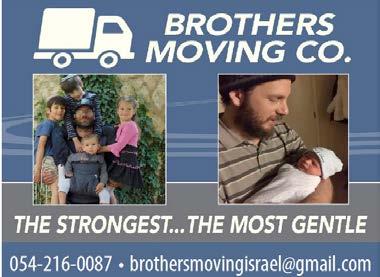
The root of “chinuch” can be found in “chanukat HaMishkan,” which is how



March 19
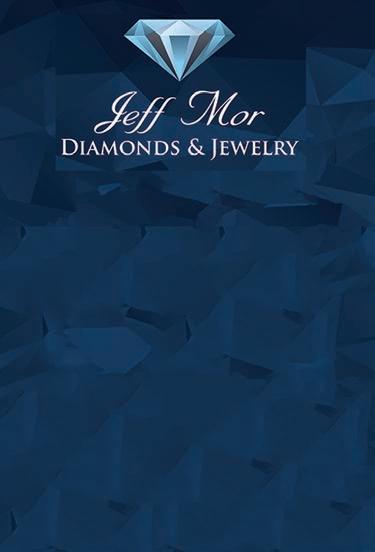
March 28
March 15
March 24
sefer Shemot concludes. Parents and educators know the dangers of always saying yes to children. For children to develop middot, appreciation and maturity, they must recognize that there are limits in life - and within them, we thrive. I’d go as far as to say that the restrictions of Shabbat are felt more deeply by today’s younger generation, when the addiction of social media has become so severe and they cannot recall a time when technology wasn’t the center of their universe. However, the limits of Shabbat reduce our distractions, presenting us with an opportunity to foster spiritual growth and meaningful connection.
ovdei HaShem we must remain vigilant so that we do not lose sight of what is important. Without time to pause and reflect on what truly matters, we can easily slip into lives that are devoid of meaning, authenticity, connection or a sense of purpose and mission. In this way, I believe that Shabbat is quite literally saving our neshamot from unending distraction and illusion, requiring that we disconnect in order to reconnect with our deepest self and values.
On Shabbat, as we shift our attention to building our relationship with HaShem, we can think about ways to infuse the week ahead with meaning. May we tap into the power of Shabbat, experience the gift that it is, and maximize the opportunities the holy day presents.


Wishing you all an uplifting and inspiring Shabbat,
Rabbi Avi Berman Executive Director, OU Israel aberman@ouisrael.org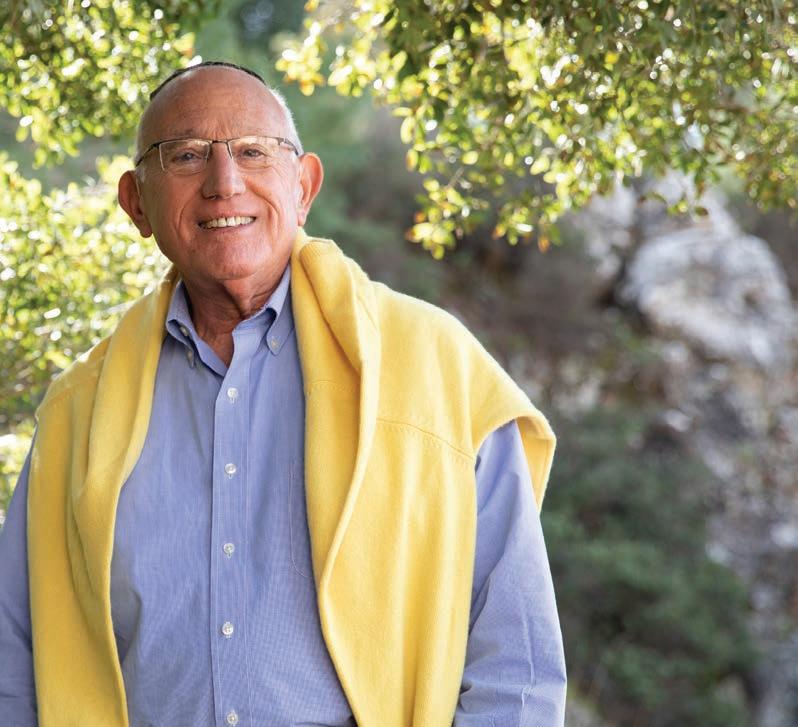



The foundation of true accomplishment is a clear focus on mission, on the goal and purpose towards which we point all our efforts.
While this may sound like a line from a popular text on management or personal productivity, it is actually the opening line of Rav M.C. Luzzatto’s Mussar classic, Mesilas Yesharim, The Path of the Just. “The foundation of devoutness and the root of pure service is to clarify… what their purpose is in this world and towards what to place their vision and focus in all their efforts every day of their life.”
We do so many “things”, check off so many tasks, and fulfill so many obligations. Without a unifying vision and clear sense of purpose they remain disjointed and fall far short of where they could and should reach.
This is the reason for the shift between how the plans for construction of the Mishkan were presented versus how those plans were executed. In our Parsha (chapters 36 and 37) it describes the actual sequence of construction, first creating the building and then filling it with its sacred elements, while in the plans conveyed in Terumah (chapter 25 to 27) it begins with the Aron Hakodesh, the holy ark. That ark contained the Luchos inscribed with the Ten Commandments
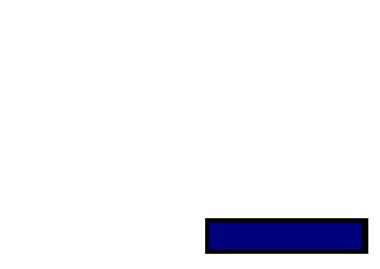
and was the place where the Divine presence visibly rested. That ark was the focal point of the entire Temple project: the creation of a place for G-d to reside amongst us. That is what it was all about, and so we present it first even if we only build it last (see Ramban’s introduction to Terumah.)
When we create clarity of purpose at the outset and keep it in mind throughout, we will not get lost along the way.
This dynamic was also in place when we began the road to redemption in Egypt. At the outset (Shemos 3;12), Hashem shared with Moshe the ultimate goal: “When you take the people out of Egypt, they will serve G-d at this mountain (Sinai).” That is what this road to freedom was about. And we bring that back every Pesach, when we celebrate our freedom one night, and the next night we begin the count of Sefirat HaOmer, looking ahead to our goal, to arrive at Sinai.
When we keep our eye on the prize, on our true mission, on Sinai, everything we do will bring us closer to getting there.
but you could possibly do them. For when it comes to communications from G-d, you are unique, irreplaceable, sui generis, one of a kind.
This exchange presents a fundamental principle of the Torah: that G-d speaks to Moshe in a way that He does not, nor will He in the future ever do again with anyone else. When Moshe says that people come to him seeking G-d, what he means is: I have access to G-d. He speaks to me. (Speaking to G-d isn’t the trick; the trick is when He answers back.) Similarly, when Moshe says that he teaches G-d’s law, what he means is that G-d communicates those laws to him and to no one else.
This could very well be the prime purpose of this Yitro story. For, in the very next story, the giving of the Torah, the very same theme of Moshe’s uniqueness as the one to whom G-d speaks is central.
3rd aliya (18:24-27) Moshe heard. He chose judges, with only the most difficult cases brought to him. Moshe sent Yitro home.

It takes an honest leader to accept suggestions to improve. Moshe displays his honesty and humility – if the suggestion is good, embrace it. Just as Yitro accepted the news of the Exodus and affirmed One G-d,





kerenmalki.org
02-567-0602

Keren Malki empowers families of children with special needs in Israel to choose home care. Donations are tax-approved in Israel, US and UK.
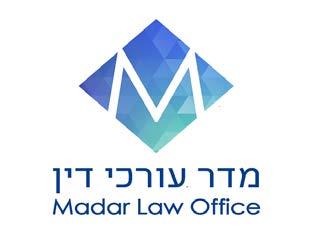


Honoring the memory of Malka Chana Roth ד”יה 1985-2001, killed in the Sbarro bombing.


This double parsha is the implementation of the building of the Mishkan. We have had 3 parshiot of commands to build the Mishkan. This is the actual construction and assembly.
When we have a double parsha, the first parsha will have 4 aliyot, with the 4th one continuing into the second parsha. That way each parsha gets 3½ aliyot.
1st aliya (Shmot 35:1-29) Moshe gathers the people, instructing them not to work on Shabbat. He appeals to the people to supply all that will be needed: metals, textiles, oil, spices, jewels. Skilled workers shall make all that G-d has commanded: the Mishkan, its covers, the Aron, the Shulchan, the Menorah …. listing all the vessels, the structure of the
Mishkan and the Kohen’s garments. In response to Moshe’s appeal, the people bring generously: the metals, the textiles, the jewels, the spices and oil.
The generosity of the people is striking. One would not imagine that we just had the Golden Calf. While we rightfully wonder how man can fall so fast after Mt. Sinai and make the Golden Calf. But we should also wonder, or perhaps marvel at how quickly man can pick himself up from the Golden Calf to fantastically donate to the Mishkan. Man is capable of being an idol worshiper one day; and a generous donor to G-d the next.
2nd aliya (35:30-37:16) Moshe introduces Betzalel, called by G-d, filled with the spirit of G-d, to be the head craftsman. Moshe called Betzalel and Oholiav and all craftsmen to come to do all that G-d has commanded. They took the materials to begin the work. More donations came the next day. Moshe announced that no more donations were needed. The work was done: the curtain drapes over the Mishkan, the goat skin drapes, and the colored skin drape on top. The planks for the walls, the Parochet to hang in front of the Holy of Holies and the Curtain at the entrance to the Mishkan. Betzalel made the Aron and the Shulchan.
Betzalel is described as having Ruach Elokim – G-d’s spirit. He is a master craftsman. But that mastery is G-d given. This is a powerful philosophy of the Torah; that man’s greatness is a gift. We are blessed, endowed with skills. Many and varied are man’s skills: Betzalel has artistry, some have music, some have eloquence, others insight into people, some mathematical ability, others wonderful nurturers. We can be proud
of our skills; while humbled that He chose us to house those skills. True humility does not require us to deny our talents; merely to ascribe their source properly. G-d given.

3rd aliya (37:17-29) And he made the Menorah and the Incense Altar.
and our next step will be to plant a fruit tree. I never thought of myself as being the agricultural type, but the feeling of settling and planting a portion of Eretz Yisrael, has been truly euphoric. Iy”H, when we plant our tree, and eat the fruits that will grow one day, I think we will be able to truly appreciate that unique Kedusha found in the fruit of Eretz Yisrael!
This is a short aliya. This double parsha has 190 verses. That is very long. Each aliya is close to 30 verses. Yet this is 13. Why such a short aliya?
The Mishkan is man’s reach for G-d. You need the building. But it is static. It is necessary. But not sufficient. A building alone is not service of G-d. Human activity is. (Like the modern phenomenon of the “edifice complex”. Beautiful synagogues with no one inside).
To conclude, when you buy your Tu B'shvat fruit this year, don’t search for those dried apricots and banana chips imported from Turkey. Rather, head over to the fresh produce and buy yourself some nice juicy Kedusha-filled Jaffa oranges and thank Hashem for bringing you to this land in order to be able to הבוטמ עבשלו הירפמ לוכאל, imbibing that Kedusha in every bite that you take!!
There is a pattern to the order of the building of the Mishkan: static to dynamic. The Mishkan is the place of man’s rendezvous with G-d. It is mankind reaching for G-d. Man’s service of G-d is dynamic. Doing. Acting. Serving. That dynamic service, of human beings performing service, requires a building. But the building is the means to the end; it is the stage for the performance.
All the Shiurim and classes at the OU Israel Center during the week of March 19th (רדא ו"כ) are dedicated to the blessed memory of my beloved father

Former Assist. Clinical
on his 47th yahrzeit - רדא ז"כ
Mel David
Professorof Medicine, UCLA School of Medicine;
Author of The 18% Solution –Lose 18% of Your weight in 18 Weeks

Not the performance itself. Our parsha is the move from static to dynamic. From building to service.
The building is made first. Followed by the contents. Build the outside first; then furnish it inside. So build the curtains that form the roof. And the walls. And the curtain to divide the holy of holies, the parochet. Static. A building.
No service of G-d is done by the building. Were there to be a building, with no activity inside, G-d would not be served by the building alone. We need activity.
The vessels of the Mishkan are built. Upon them will be service of G-d. The Aron goes in the holy of holies. Then the Shulchan, placed outside the curtain of the holy of holies. Followed by Menorah and Incense altar.
We have moved from static building to the vessels which will be the dynamic service of G-d.
Within the keilim, the vessels of the Mishkan, some are more static and some more dynamic.
The Aron comes first; not just because it is holiest but because it is static. There is no avoda, no service done with the Aron. It sits, static, in the holy of holies.
who passed away 4 years ago on רדא ט'י
Next is the Shulchan. There is avoda, service. Breads are placed on this table once a week remaining for the week. There is nothing done with the breads daily. There is dynamic, human service. But not daily. Only weekly. We have not yet gotten to the most dynamic; human, daily service.
And so the aliya ends there. There is a progression: from the static building to the static Aron to the weekly dynamic Shulchan.
Our aliya is dynamic. These are the most holy keilim, vessels that have the most dynamic activity of service. The Menorah and the Incense are daily avoda, daily service. The Menorah is lit daily. The incense is burnt daily. Hence these vessels get their own aliya.
4th aliya (38:1-39:1) He made the altar for the offerings, the copper wash basin, the lace curtains to hang around the entire perimeter of the Courtyard and the screen to cover the entrance. An accounting was made of all the raw materials used: the gold, silver, copper – and what they were used for. The fine textiles were used for the Kohen’s garments, just as G-d commanded Moshe.
The pattern continues. The most dynamic activity is on the altar for offerings. Daily offerings. Addition Mussaf for occasions. Voluntary offerings. This is the most dynamic aspect of the Mishkan.
5th aliya (39:2-21) The Efod (skirt) was made from coloured materials as G-d commanded
Diana & Simon Rosenfelder, Edgar & Doris Leibovici, Marion & Yoni Weisz, Jerome Leibovici
הירא ןב המלש
A Holocaust survivor who set an admirable example to those he met and in everything he did.
been memorialized in a popular song, "An eternal people does not fear the long and arduous path."
be in loving memory and נ"על our dear parents whose yahrtzeits are in Kislev
Doris Weinberger a"h
ולסכ 'ד -ה"ע המלש לאקזחי תב האל הרובד
Max Weinberger z”l
ולסכ ז"כ -ל"ז בד ןב ךלמילא
Moshe. The fine jewels with the names of Israel chiseled were placed on the Efod shoulders, as G-d commanded Moshe. The Choshen (Breastplate), of the material of the Efod, was made with the 12 jewels mounted on it, hung from the shoulder pieces of the Efod, as G-d commanded Moshe.
Greatly missed by their children, grandchildren and great grandchildren
Rav Aryeh and Dvora Weinberger
Bernie and Leah Weinberger
Patience is necessary for those who follow Isaac's way. But a wise woman taught us that patience is but another name for hope. That woman was Jane Austen, who put these words into the mouth of one of the characters in her great novel, Sense and Sensibility: "Know your own happiness. You want nothing but patience—or give it a more fascinating name: call it hope."
Menachem and Hannah Katten
In observance of the Shloshim of our friend
Yehuda Leib Berren z"l
Rav Menachem Weinberg will give a shiur in his memory "Heroic Joy"
Monday evening, 23 November/ 8 Kislev
We have moved from static to dynamic, from weekly service to once a day service to multiple times a day service. But there is an even more dramatic dynamic service. Not just multiple times a day. But all day, every day. And that is the Kohanim’s garments. The wearing of the garments is itself an avoda, a service. Walking in the Mikdash with these garments is in itself a service. This is constant service.
7:30pm
Zoom Meeting: 853 8980 1519
Password: Yehuda

So too with our service of G-d. We have weekly mitzvot. Daily. Multiple times a day. And constant; like fear of G-d, love of G-d, speaking truth, caring for others.
6th aliya (39:22-43) The Meil (robe) was made of Techelet, with pomegranates and bells on the hem as G-d commanded Moshe. The K’tonet (linen robe) was made for all the Kohanim, as was the Turban and belt as G-d commanded Moshe. The golden Tzitz (on the forehead) was made and fastened as G-d commanded Moshe. All the work was completed as G-d commanded Moshe. All of the completed work was brought to Moshe: the
For more information:

Menachem Persoff: 050-570-1067


building of the Mishkan, the vessels, the outer courtyard, the Kohen’s garments. Moshe saw that it was all done as G-d had commanded Him. Moshe blessed the people.
We conclude with the regal garments, the colored and golden ones of the Kohen Gadol. With the completion of the work Moshe blesses the people. May the Shechina rest on the work of your hands. For that is truly the pattern: static, then man’s service, progressing from less frequent to more frequent, to constant service of G-d. But that is all a oneway street. Us to Him. Moshe blesses them; may your reach to Him receive His reach for you. Or more accurately, the Shechina, Her embrace of you.
7th aliya (40:1-38) G-d commands Moshe: On the first day of the first month, assemble the Mishkan. Moshe is instructed in the exact order to place the vessels and the building. He is to clothe the Kohanim and anoint them. Moshe did all that G-d commanded him. On the first day of the first month of the second year, the Mishkan was assembled, in the exact order Moshe was instructed by
(ו”ט:מ) ”םהיבא תא תחשמ רשאכ םתוא תחשמו“
G-d. Moshe completed the work. A cloud covered the Ohel Moed; the glory of G-d filled the Mishkan. Moshe could not enter due to the cloud and the glory of G-d. The lifting of the cloud was a signal to travel. The cloud of G-d was on the Mishkan daily, fire at night, visible to all the Jewish people.
The culmination of the building is the descent of the cloud, indicating G-d’s presence. That is the true culmination of the Mishkan. A place on earth for the rendezvous of man and G-d. Our reach for Him receives His embrace. The Jewish people have become a people with whom the Shechina resides. And that is the culmination of not only this building but the entire book of Exodus. Bringing us to be His partner in this world.
The special maftir for HaChodesh is read from Shemot 12:1-20
YECHEZKEL 45:16-46:18
This Shabbat the reading of the haftorah
BY RABBI CHANOCH YERES R av, Beit Knesset Beit Yisrael, Yemin Moshe”And you shall anoint them as you anointed their father.“ 40:15.
Towards the end of the Book of Exodus, G-d instructs Moshe to clothe Aaron and his sons in their priestly garb. Then, Moshe is commanded to anoint the children of Aaron exactly as he anointed their father.
The Meshach Chochmah (Rabbi Meir Simcha HaCohen from Dvinsk 1843-1926) asks why was it necessary to anoint as he had their father? What was so unique about Moshe anointing Aaron?
He answers that what was unique was that Moshe never felt any jealousy to his brother upon receiving the Priestly position. Moshe had even fulfilled the role of High Priest during the preceding days to the Sinaitic Revelation. Moshe never resented Aaron for being appointed. Moshe never felt upset that his children would not be able to receive similar positions, even though the Rabbis in the Midrash point out that G-d refused such a request from Moshe.
G-d, now reminds Moshe that his anointing Aaron’s sons should be done with the same love and acceptance as he had anointed his brother, their father.
Shabbat Shalom
relates to the Pesach offering that will be brought during the time of Mashiach. This theme is an extension of the HaChodesh Torah reading in which Moshe commands the children of Israel to make arrangements to bring the Paschal lamb.
The haftorah describes the remarkable vision of Yechezkel in which he sees the third Holy Temple. The passage opens with a description of the various karbanot that will be offered in the inauguration and then it mentions the special Pesach offering.
OLD KATAMON
* Exclusive! New! 160 sqm, 4 bdrms, 3 bathrooms, garden, storage, parking, close to the Shtibelach. Occupancy within 1.5 years
*125 sqm, priv. entrance 3 exp. NIS 4,300,000
SHAAREI CHESSED / RECHAVIA
1) Renovated 110 sqm 3 bdrms, 1st floor, succah.
2) Beautiful 3 bdrm apt + 50 sqm succah balcony, shabbat elevator, parking and view.
3) New 228 sqm duplex penthouse, 30 sqm succah balcony, shabbat elevator, parking and a view.
GERMAN COLONY
2 bdrms, 2 bathrooms, succah+ roof terrace.
TALPIOT
4 rms, balcony, elevator, machsan, parking, view.
NACHLAOT
Renovated 2 rms, private entrance, storage room, NIS 2,350,000
This haftorah is meant to help prepare and inspire us as we move closer to the holiday of Pesach. But even more so, the haftorah reminds us to set our vision on a celebration of Pesach that will include the Pesach offering and in a rebuilt Temple in Jerusalem.
May that day come soon!

Vayakhel has a single mitzvah counted among the 613. Pekudei has none.
Vayakhel has a single mitzva counted among the 613. P'kudei has none.
BAKA– Spacious 2 bdrms, 2nd floor, furnished, succah balcony, private parking, immediate. NIS 6500
FOR MANY MORE PROPERTIES: 02-651-4030
[P> X:Y (Z)] and [S> X:Y (Z)] indicate start of a parsha p’tucha or s’tuma. X:Y is Perek:Pasuk of the Parsha’s beginning;
(Z) is the number of p’sukim in the parsha.
Numbers in [square brackets] are the Mitzva-count of Sefer HaChinuch AND Rambam’s Sefer HaMitzvot. A=ASEI; L=LAV (prohibition). X:Y is the perek & pasuk from which the mitzva comes.
20+9 P'SUKIM - 35:1-29
[S> 35:1 (3)] Moshe gathers the People (according to Tradition, this took place on the "first" Yom Kippur or the day after, following 40 days and 40 nights on Har Sinai) to instruct them concerning the building of the Mishkan. He begins with a warning to keep Shabbat (even while being
With the month of Nissan upon us, we return to the story of our nation’s birth, as Moshe rises to leadership and the exodus again unfolds.
Moshe’s yearly introduction in the text, however, is cause for pause. For some reason, the Torah chooses to introduce the birth of the greatest leader we have ever knownin the most innocuous way possible.
“And a man went from the House of Levi and he took a daughter of Levi. And the woman conceived and gave birth to a son.”
Questions abound:
Why does the Torah depart from its usual mode of describing an individual’s birth?
What does the seemingly superfluous phrase “and a man went…” indicate?
Why does the Torah omit any mention of Moshe’s lineage- to the point where even the names of his parents are deliberately omitted?
Above all, is this any way to introduce a hero?
Compounding these questions is the fact that the omitted information concerning Moshe’s lineage is ultimately included in the
BY RABBI SHMUEL GOLDIN Faculty, OU Israel Rabbi Emeritus, Congregation Ahavath Torah, Englewood NJ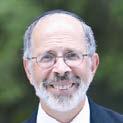
Parsha that follows (why the information is given at that particular point is the subject of another article).
If the information concerning Moshe’s lineage is eventually shared, why is it left out in the first place?
Numerous commentaries address the issues before us…
Working within the realm of pshat, the Ibn Ezra suggests that, at the time of Moshe’s birth, the Israelites lived in many cities in Egypt. Through the phrase, “And a man went,” the Torah is simply informing us that Amram “went” from one Egyptian city to another in order to marry Yocheved.
Perhaps the Ibn Ezra intends to emphasize that Yosef’s plan for his family’s descent into Egypt has, by this point, broken down. Originally meant to remain separate from the Egyptians in the land of Goshen, the Israelites are assimilating into their surroundings.
The Ramban, however, takes issue with the Ibn Ezra’s interpretation, arguing that the Torah would have no reason to inform us concerning a journey taken by Amram from one city to another.
Instead, maintains the Ramban, the verb lalachet, “to go,” is often used in the text when a new and difficult step is about to be taken. By stating, Veyeilech ish, “And a man went,” the Torah underscores Amram’s courageous willingness to marry in spite of Pharaoh’s harsh decrees.
The Ramban’s approach connects to a
well-known Midrash, cited directly by Rashi and others, that credits Moshe’s sister, Miriam, with convincing her parents to reunite after they had initially separated due to Pharaoh’s rulings.
From the Ramban’s perspective, Amram’s and Yocheved’s spiritual resistance in the face of Pharaoh’s tyranny thus establishes a paradigm. Across the ages, how many Jewish heroes have demonstrated similar quiet strength in the face of overwhelming odds?
As to the omission of the names of Moshe’s parents from the narrative, the Ramban explains that the text ultimately desires to trace the lineage of this great leader in intergenerational fashion. In order to avoid interrupting the dramatic story of Moshe’s birth with a lengthy genealogical discussion, however, the text delays this description to a later point.
Yehuda Nachshoni maintains that the cryptic description of Moshe’s birth is meant to convey one overarching fact: Moshe’s origins are human, not divine.
In clear contradistinction to both pagan mythology and Christian tradition, Judaism views its heroes as mortal beings who aspire to and attain greatness. The Torah thus emphasizes that Moshe, the greatest of our leaders is fully human- the son of “a man from the House of Levi who took a daughter of Levi.”
Many years ago, however, I realized that we could take this idea one step further; only to later find the suggestion already raised by Rabbi David Sperber, in Michtav L’David.
The text omits the particulars of Moshe’s lineage in order to convey the limitations of Yichus, pedigree.
The names of Moshe’s parents are omitted to underscore that Torah greatness is not inherited but earned.
Moshe will rise to leadership on his own merit, not on the merit of his ancestors.
This last point brings to mind a personal experience that had a telling effect on me.
Through many of my elementary and high school years, I would always find a way to let my teachers know of my “family yichus,” family pedigree (yes, I guess I really was one of those annoying kids).
My two grandfathers, were both rabbanim who played significant communal roles in the early half of the 20th century. While very different from each other, each was well-known in the circles in which he travelled.
My teachers were invariably impressed by my “yichus.”
Then, however, I entered Yeshiva University.
On the very first day, I approached my new Rebbe to ask him if he knew either of my grandfathers…fully expecting him to be “properly impressed.”
His response, however, brought me up short and finally put me in my place.
“That’s all very interesting, he said, but the only “yichus” I’m interested in is yichus atzmecha, your own, personal merit.”
A difficult, powerful lesson taught in a few short words…
Needless to say, I never brought up my “family yichus” to my teachers again.
More importantly, I learned that, in a world so often preoccupied with past “yichus,”- in critical areas from shidduchin to school/yeshiva admissions, and more…
It’s the “yichus” we, ourselves, create that is the most significant of all.
Rabbi Goldin is the author of the OU Press volumes ”Unlocking the Torah Text,“ and ”Unlocking the Haggada."
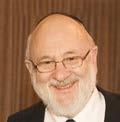
“Words, words, words,” he shouted at me. He was a young man, raised as an observant Jew, but now in rebellion against his traditional upbringing. His parents had asked me to meet with him for several sessions to see if I could at least temper his rebellious spirit, and perhaps even convince him to return to the path they desired him to follow.
To put it mildly, he was reluctant to meet with me. But he agreed to do so, and in fact was a bit more cooperative than other youngsters, of a similar mind, with whom I have had such discussions. He spoke, argued, debated, questioned, and expressed himself quite articulately. Occasionally, he even listened.
I well recall his major concern with traditional Judaism. He felt that our religion insisted that we limit our experience of the world to the verbal modality. “There is so much to see and hear, to touch and feel, to taste and smell, in this world. But all our religion tells us to do is to use words. Read,
study, pray. Words, words, words. I want a richer life, a more robust experience!” he exclaimed.
The attitude expressed by my young friend is not at all limited to rebellious youth. Many of our adult coreligionists have similar objections, although they are often too ashamed to articulate them. But, when they let their guard down, many Jews, including some who are regular participants in synagogue services, admit to finding our religion overly focused upon thought and language.
It is interesting to note in this regard that one of the most profound Jewish thinkers of the 20th century characterized our religion as one of “shmiah,” listening and hearing, and not as a religion of “re’iyah.” seeing. I refer to Rabbi Dovid HaCohen, a close disciple of Rabbi Abraham Isaac Kook, the first Chief Rabbi of the Land of Israel.
Rabbi HaCohen’s personal lifestyle was an extremely ascetic one, having committed himself to the role of a Nazirite and thus renouncing the pleasures of the products of the vine. It is thus no surprise that he wrote a book called The Voice of Prophecy, in which he maintained that our religion relies upon the ear, and not the eye, the auditory sense to the exclusion of the visual sense. Hence, the single most popular phrase in the Jewish religious language is, “Shema Yisrael, Hear O Israel”.
As for me, I am quite confident that neither my young friend, nor those adults who find
our religion excessively verbal, nor even the pious and philosophical Rabbi HaCohen, are correct. For me the Jewish religion is much more full-bodied and allows for the entire panoply of the human senses: visual, certainly, but also our senses of touch, taste, and smell.
Historically, in the days of the ancient Temple, there were many glorious examples of ceremonies and rituals which employed a wide range of activities besides the mere recitation of words. Granted, nowadays such examples are fewer, but they are readily and regularly accessible to every Jew.
The most powerful of these rituals has its source in this week’s Torah portion, Vayakhel-Pekudei (Exodus 35:1-40:38). I refer to the verse near the beginning of the parsha which reads:
“You shall kindle no fire throughout your habitations on the Sabbath day.” (Exodus 35:3)
It is instructive that although we are forbidden to kindle a fire during the Sabbath, it is fire which symbolically ushers in the Sabbath and it is fire which accompanies it at its conclusion. Sabbath begins when, traditionally, the woman of the house lights the Sabbath candles. It ends when the family, and sometimes the entire congregation, gathers around a torch of fire and participates in the Havdalah service.
The use of fire to bracket the Sabbath experience is a dramatic example of a nonverbal experience which involves the sense of touch, with the experience of heat and warmth, as well as the visual experience of seeing.
The view of the modest candles heralding the approach of the Sabbath is what sets

BAKA WITH GARDEN - Close to Emek Refaim, large 4 rooms, 88m, small garden, 35m, quiet, good investment, 3,300,000 NIS
MEKOR CHAIM - Close to the mesila park, large 4 rooms, 98m, Shabbat elevator, 2 balconies, good shape, master bedroom, quiet 3,590,000 NIS
GERMAN COLONY - Nice, 4 rooms, modern building with Shabbat elevator, master bedroom, bright, quiet, parking, storageroom 4,600,000 NIS
UNIQUE HOUSE IN OLD KATAMONGreat location, beautiful house on a plot of a dunam, huge garden, Arabic style, quiet, 2 parkings spots, rare!
the tone of tranquility and serenity which defines that holy day.
The fiery image of the havdalah candle, which halachically must be torch-like, symbolizes the return to the activity and productivity of the coming week.
But Havdalah does not only incorporate the senses of vision and touch; it also includes the sense of smell--the spices--and, of course, the sense of taste--the cup of wine. A multi-sensory experience if there ever was one.
The fire of Havdalah is its dominant image (see accompanying photo of Havdalah at an Israeli Air Force base) and contains such rich symbolic meaning. This meaning is best conveyed by the following passage in the Midrash, which describes Adam’s emotions at the conclusion of the first Sabbath of creation:

“The sun set at the conclusion of the first Sabbath. Darkness began to descend. Adam was terrified... What did the Holy One Blessed Be He do? He prepared for him two flint stones. Adam rubbed them together. A fire was ignited, and all was illuminated. Adam blessed the fire, and thus it is written ‘and the night will be light for me’ (Psalms 139:11). What blessing did he recite? ‘Blessed are You, Lord our God…Who
creates the lights of fire.’” (Bereishit Rabbah 11:2)
The message here is clear. Fire was given to man. Man is to use it to continue the work of God’s creation. Just as God worked during the first six days of creation, so too must man be productive during the six days of his work week. The Almighty gave Adam fire so that after his restful Sabbath, he could return to the world of action.
How different is this Midrash from the Greek myth of Prometheus. Prometheus stole fire from the gods of Mount Olympus, from Zeus. In contrast to the Greek tradition, in which the gods are protective of fire and wish to keep it from man, the Torah insists that it was God who enabled man to create fire so that he could continue the process of creation using his own resources.
We can readily conclude, then, that there is much more to our religion than words. There is a place, and a prominent one, for visual imagery, for delicious tastes, and for fragrant scents. And above all, there is a demand that we move from our essentially passive Sabbath stance to one of creative and constructive action.
Our faith contains much more than “words, words, words.”
• Curtains & draperies
• Designer curtains
• Venetian & Woven wood blinds
• Blackout, Vertical, Roller, Roman & Pleated shades


www.ashleywilde.co.il




At the beginning of this parsha Moses performs a tikkun, a mending of the past, namely the sin of the Golden Calf. The Torah signals this by using essentially the same word at the beginning of both episodes. It eventually became a key word in Jewish spirituality: k-hl, “to gather, assemble, congregate.” From it we get the words kahal and kehillah, meaning “community.” Far from being merely an ancient concern, it remains at the heart of our humanity. As we will see, recent scientific research confirms the extraordinary power of communities and social networks to shape our lives.
First, the biblical story. The episode of the Golden Calf began with these words: “When the people saw that Moses was so long in coming down from the mountain, they gathered themselves [vayikahel] around Aaron” (Ex. 32:1). At the beginning of this parsha, having won God’s forgiveness and brought
down a second set of tablets, Moses began the work of rededicating the people:
“Moses assembled [vayakhel] the entire Israelite congregation” (Ex. 35:1).
They had sinned as a community. Now they were about to be reconstituted as a community. Jewish spirituality is first and foremost a communal spirituality.
Note, too, exactly what Moses does in this parsha. He directs their attention to the two great centres of community in Judaism, one in space, the other in time. The one in time is Shabbat. The one in space was the Mishkan, the Tabernacle, that led eventually to the Temple and later to the synagogue. These are where the kehillah lives most powerfully: on Shabbat when we lay aside our private devices and desires and come together as a community; and the synagogue, where community has its home.
Judaism attaches immense significance to the individual. Every life is like a universe. Each one of us, though we are all in God’s image, is different, therefore unique and irreplaceable. Yet the first time the words “not good” appear in the Torah are in the verse, “It is not good for man to be alone” (Gen. 2:18). Much of Judaism is about the shape and structure of our togetherness. It values the individual but does not endorse individualism.

Ours is a religion of community. Our holiest prayers can only be said in the presence of a minyan, the minimum definition of a community. When we pray, we do so as a community. Martin Buber spoke of I-andThou, but Judaism is really a matter of We-and-Thou. Hence, to atone for the sin the Israelites committed as a community, Moses sought to consecrate community in time and place.
This has become one of the fundamental differences between tradition and the contemporary culture of the West. We can trace this in the titles of three landmark books about American society. In 1950, David Riesman, Nathan Glazer, and Reuel Denney published an insightful book about the changing character of Americans, called The Lonely Crowd. In 2000, Robert Putnam of Harvard published Bowling Alone, an account of how more Americans than ever were going ten-pin bowling, but fewer were joining bowling clubs and leagues. In 2011, Sherry Turkle of MIT published a book on the impact of smartphones and social networking software called Alone Together.
Listen to those titles. They are each about the advancing tide of loneliness, successive stages in the long, extended breakdown of community in modern life. Robert Bellah put it eloquently when he wrote that “social ecology is damaged not only by war, genocide, and political repression. It is also damaged by the destruction of the subtle ties that bind human beings to one another, leaving them frightened and alone.”1
Jerusalem Real Estate is My Business
Eta: 054-723-3863 Rachel: 052-546-6425
Amazing stand alone homes in OLD KATAMON, TALBIYA, BAKA, GERMAN COLONY
Charming apartment in REHAVIA for sale. 2 bedrooms and 2 full bathrooms, renovated, large kosher kitchen. 2nd floor walk up.
4,100,000 NIS
In GERMAN COLONY, 140 sqm on one floor, 2nd floor walk up, completely renovated with 4 bedrooms and 2 full bathrooms. Large sukka terrace.
7,100,000 NIS
BAKA Penthouse. Across from BAKA. 154 sqm on one floor with 4 bedrooms and 2 full bathrooms. Shabbat elevator




2 underground parking and 3 storage units!!!
25 sqm Sukka terrace off living room plus large roof top terrace. NEW PRICE!
5,950,000 NIS
In the heart of BAKA enclosed in a magical courtyard:
3 bedrooms 2 full bathrooms one flight up. Beautiful spacious sukka terrace facing open gardens. Completely renovated with architectual design & high level finishes.
6,250,000 NIS
1 Robert Bellah et al., Habits of the Heart: Individualism and Commitment in American Life (Berkeley: University of

Eta Morris Realty, Ltd.

etamorrisrealestate@gmail.com
Eta: 054-723-3863 · Rachel: 052-546-6425
etamorrisrealty.co.il
That is why the two themes of parshat Vayakhel – Shabbat and the Mishkan (today, the synagogue) – remain powerfully contemporary. They are antidotes to the attenuation of community. They help restore “the subtle ties that bind human beings to one another.” They reconnect us to community.
Consider Shabbat. Michael Walzer, the Princeton political philosopher, draws attention to the difference between holidays and holy days (or as he puts it, between vacations and Shabbat).2 The idea of a vacation as a private holiday is relatively recent. Walzer dates it to the 1870s. Its essence is its individualist (or familial) character. “Everyone plans his own vacation, goes where he wants to go, does what he wants to do.” Shabbat, by contrast, is essentially collective. “You, your son and daughter, your male and female servant, your ox, your donkey, your other animals, and the stranger in your gates” (Deut. 5:14). It is public, shared, the property of us all. A vacation is a commodity. We buy it. Shabbat is not something we buy. It is available to each on the same terms: “enjoined for everyone, enjoyed by everyone.” We take vacations as California Press, 1985), 284.
2 Michael Walzer, Spheres of Justice (Oxford: Blackwell, 1983), 190–96.
to the OU Israel Dorot Choir under the leadership of Hadassah Jacob for their outstanding performance at the Begin Center. It was truly amazing!

individuals or families. We celebrate Shabbat as a community.
Something similar is true about the synagogue – the Jewish institution, unique in its day, that was eventually adopted by Christianity and Islam in the form of the church and mosque. We noted above Robert Putnam’s argument in Bowling Alone, that Americans were becoming more individualistic. There was a loss, he said, of “social capital,” that is, the ties that bind us together in shared responsibility for the common good.
A decade later, Putnam revised his thesis.3 Social capital, he said, still exists, and you can find it in churches and synagogues. Regular attendees at a place of worship were – so his research showed – more likely than others to give money to charity, engage in voluntary work, donate blood, spend time with someone who is depressed, offer a seat to a stranger, help find someone a job, and many other measures of civic, moral, and philanthropic activism. They are, quite simply, more public spirited than others. Regular attendance at a house of worship is the most accurate predictor of altruism, more so than any other factor, including gender, education, income, race, region, marital status, ideology, and age.
Most fascinating of his findings is that the key factor is being part of a religious community. What turned out not to be relevant is what you believe. The research findings suggest that an atheist who goes regularly to a house of worship (perhaps to accompany
a spouse or a child) is more likely to volunteer in a soup kitchen than a fervent believer who prays alone. The key factor again is community.
This may well be one of the most important functions of religion in a secular age, namely, keeping community alive. Most of us need community. We are social animals. Evolutionary biologists have suggested recently that the huge increase in brain size represented by Homo sapiens was specifically to allow us to form more extended social networks. It is the human capacity to co-operate in large teams – rather than the power of reason – that marks us off from other animals. As the Torah says, it is not good to be alone. Recent research has shown something else as well. Who you associate with has a powerful impact on what you do and become. In 2009 Nicholas Christakis and James Fowler statistically analysed a group of 5,124 subjects and their 53,228 ties to friends, family, and work colleagues. They found that if a friend takes up smoking, it makes it significantly more likely (by 36 per cent) that you will. The same applies to drinking, slenderness, obesity, and many other behavioural patterns.4 We become like the people we are close to.
A study of students at Dartmouth College in the year 2000 found that if you share a room with someone with good study habits, it will probably raise your own performance. A 2006 Princeton study showed that if your sibling has a child, it makes it 15 per cent more likely that you will too within the next two
years. There is such a thing as “social contagion.” We are profoundly influenced by our friends – as indeed Maimonides states in his law code, the Mishneh Torah. 5

Which brings us back to Moses and Vayakhel. By placing community at the heart of the religious life and by giving it a home in space and time – the synagogue and Shabbat – Moses was showing the power of community for good, as the episode of the Golden Calf had shown its power for bad. Jewish spirituality is for the most part profoundly communal. Hence my definition of Jewish faith: the redemption of our solitude.
5 See Maimonides, Mishneh Torah, Hilchot Deot 6:1.

These weekly teachings from Rabbi Sacks zt”l are part of his ‘Covenant & Conversation’ series on the weekly Torah teaching. With thanks to the Schimmel Family for their generous sponsorship, dedicated in loving memory of Harry (Chaim) Schimmel. Visit www.RabbiSacks.org for more.
4 Nicholas Christakis and James H. Fowler, Connected: The Surprising Power of Our Social Networks and How They Shape Our Lives (New York: Little, Brown, 2009).

In the first two p’sukim of this week’s haftarah (according to the Ashkenazi minhag), the navi Yechezkel depicts the required gifts that the nation would give to the “nasi” - the king - and the required offerings that the king was required to bring on the holidays and on the Shabbatot as an atonement for the people. The remainder of the reading tells of the sacrifices to be offered and the rituals that would be followed from the beginning of the month of Nisan. Clearly, the bulk of the haftarah connects quite well to the Shabbat before the month of Nisan. But it is difficult to understand why Ashkenazi practice includes the introductory verses that have little- or no connection to the month of Nisan. Once again, we turn to the preceding p’sukim to help illuminate the message of the navi.
The final section of Sefer Yechezkel is one of comfort and consolation in which the prophet focuses on the future rites and rituals that would be followed in the final Bet HaMikdash. In specifying the exact Temple areas reserved for the Kohanim, the Leviyim and the Nasi, -as well as their limits. In this 45th perek, Yechazkel takes the opportunity to recall the past trespasses of the different kings who often overstepped their bounds, frequently stealing and pilfering from the common people. In the future, he adds, there will be an end to such behavior, it would be a time of fair weights and measures in the land as well as in the Holy Temple.
It is at this juncture that our haftarah begins,
with the navi sharing with the people what they would give to the nasi and the many responsibilities that the leader had to do for the people – including his duties to bring atonement to the nation. The addition of these few p’sukim, when properly understood, helps us better understand the message of Yechezkel – and extends the prophet’s lesson to all his visions of the future of Divine service. Indeed, this introduction, and its previous verses, are not only meant for the coming month of Nisan and the holiday of Pesach, as we will see, but for the entire Messianic Era.
The prophet Yechezkel’s visions of Israel’s glorious future includes the rebirth of Israel’s land, the resurgence of the nation’s seemingly “dry bones”, the reunification of the tribes and the final war of Gog and Magog (chapters 36-39). The navi then turns to detail the renewed service in the rebuilt Bet HaMikdash, including blueprinting the design and dimensions of the holy site, all of which would bring G-d’s presence back to the Temple (40-43). In these latter chapters (44-46), Yechezkel describes the functions of the different segments of the people in the Mikdash, including the divisions of the Kohanim and Leviyim as well as the responsibilities of the King. The navi closes his book in the 47th and 48th chapters with a description of the future boundaries of the land, its partition to the tribes and the new boundaries of Yerushalayim herself.
But the prophet’s vision of the future life of
Israel seems to focus primarily on the material: the practical workings of the divine service, the physical division of the land and the detailed depiction of the new Bet Mikdash. Where are the essential demands of all our prophets for טפשמו הקדצ – justice and righteousness? Are these not indispensable values and vital requisites for fulfillment of the prophetic hope for an improved future? So where are they?
They are actually right in front of us or, more correctly, before us. The five verses that precede the opening of our haftarah are replete with Hashem’s demand to “set aside lawlessness….and do הקדצו טפשמjustice and righteousness”. These were the demands that Yechezkel used to introduce the depiction of the great material successes and the religious advances.
There could be none of these without justice, without compassion, without righteousness. It might well have been the goal of the Ashkenazi scholars to open this haftarah with the responsibilities of the future leaders to the nation in order to remind us that the idyllic future described by Yechezkel could only be realized when הקדצו טפשמ is practiced one to another.
And we need such reminders today as well!


New Listing! On the exquisite Dubnov St. in Talbieh, private 135m cottage, totally renovated with 65m private landscaped garden, view from balconies, a real gem! MAYA - 054-6650184
Magnificent Authentic private house on a small dead end of Baka - 650m built on 3 levels with huge basement, 750m plot with wonderful landscaped garden, thoughtful layout, an abundance of light,a unique property!
DEBORAH - 054-4804767
Luxurious garden apartment on a small lane of Old Katamon, 340m built on 2 levels, 8 rooms, separate unit with separate entrance, high ceilings, full of charm, very quiet & bright, 130m private garden, top of the line finishes, close to the park
DEBORAH- 054-4804767
In a small lane of the German Colony, Garden apartment with private entrance, 250m with private garden, parking, high ceilings, in an Authentic beautiful 3 apartment building
MAYA – 054-6650184
Beautiful new penthouse in Greek Colony- 190m with 80m terraces, succah, beautiful views, 5 rooms, elevator, parking, renovated at very high standard, spacious living areas and huge kosher kitchen
MAYA – 054-6650184
On the edge of The German Colony - Unique Authentic building of 700m built on a huge plot of 1,200m - perfect for an apartment building or a tremendous private house.
DEBORAH - 054-4804767
Private small building in Baka, Shimshon St. 300m with additional building rights, huge private garden, divided into 3 units so can be private house of 3 separate apartments, very attractive price
DEBORAH - 054-4804767
On the exquisite Elcharizi St., Rechavia, new project, new 280m penthouse, 100m terraces, finishes and layout according to buyer requests!
DEBORAH - 054-4804767
Ben Maimon St. Duplex new apartment, 5 bedrooms, 4 ensuite, 4 terraces, private parking, Shabbat elevator, all renovated, 3 exposures, very sunny!!
DEBORAH-054-4804767
POBox 1441
Jerusalem 9101302


Available online, the OU Israel Center and local Jewish bookstores
"Hundreds of interpretations have been written on the Haggada Shel Pesach, and each year new interpretations are added to them, but this Haggada 'Shalom Rav' from the precious Torah teachings of Rav Shalom Rosner, the Rav of Nofei HaShemesh community, is special"

Rav Asher Weiss א"טילש


Parshat Vayakhel and Pekudei are often read together. It is somewhat ironic then that the words seem to have diametrically opposed connotations. Vayakhel – refers to assembling, coming together as community. While Pekudei relates to the counting of each person, highlighting the significance of the individual.
In parshat Hukat Moshe is instructed “Hakhel et ha’eida”, to the gather the people. Eida typically has a derogatory connotation, as it did in connection with “Korach v’adato.” It is a gathering of individuals that do not necessarily have a deep connection. They may have a common goal but are not deeply connected. Perhaps that is why Hashem directed Moshe in Parshat Hukat to instill in the nation a more intimate connection, as they were about to
enter Eretz Yisrael. They were not a group of individuals with a mere common destination, but a nation with a common identity. When Moshe is commanded in our parsha to gather the people the term “vayakhel et kol adat bnei yisrael” is used to highlight the deep connection that should be created among the nation as they learn hilchot shabbat and begin to partake in the building of the mishkan.
Pekudei
The word “pekeudei” stems from the root “pekod” which means to count. When individuals are counted it portrays their self-worth. Hazal tell us that Hashem counts us to depict his love for us. Someone who adores riches constantly counts their assets. It highlights the value of each item.
What is more important, a team mentality where every individual belongs to a larger community, or is it more essential to stress the unique capabilities of each individual? The Lubavitcher Rebbe (Gutnick Chumash) suggests that the ideal is in fact to harmonize these two opposing qualities. Perhaps that is what the Torah is hinting at when we read these two parshiyot together.
How are we to combine these two opposing qualities? First, when it comes to tefilla, by davening in a minyan, in a group, our tefillot are better heard. Yet, Pekudei represents the individual that should have the proper kavana and who has the ability to insert personal requests and prayers.

Have you been meaning to get rid of that old hat lying in your closet?



Trade-in your old hat and get a discount on any new hat you purchase at SherlockS. We’ll clean your old hat and bring it to clothing centers where new immigrants and less fortunate people are looking for clothes.
Second, the way in which we view the world. On one hand Vayakhel directs us to minimize the details of existence by understanding that God is supreme, yet, Pekudei leads us to appreciate every little creation.


Third, Vayakhel teaches us that no matter how low a person may fall, he is always a part of a greater community. Pekudei reminds us that no matter the difficult challenges one may encounter, they retain their unique God given talents and shlichut that no one else possess.
May we be able to achieve the proper balance between Vayakhel and Pekudei. Being a part of the community without sacrificing the individuality of each member of the community. That requires each of us to work hard in order to maximize our personal potential and to recognize and encourage others to capitalize on their unique capabilities for the benefit of the kehilla.

• Checks: Make out to “Yesh Ezra”
Send to: Yesh Ezra, POB 36156, Romema, Jerusalem

• Bank Transfer: Bank Mercantile (17), Branch 642, A/C 79747843, Yesh Ezra


To obtain your tax benefit receipt, send details by Whatsapp/email.
• Credit card: Sara at 077-820-0196
(Sun-Thu. 10:00am-3:00pm)
• Website: www.yeshezra.org
Click on “Donate Now”
Inquiries:
Menachem Persoff 050-570-1067



menpmp@gmail.com
An opportunity for a bachur yeshiva (Tichon/Gevoha) to make some money on a commission basis while studying in yeshiva. Potential to make a nice income, without detracting from your studies in any way.
Contact: silber.alan@gmail.com
WhatsApp: 0544966598
Seeking P/T Social Media & Communications Coordinator for Jerusalem Synagogue



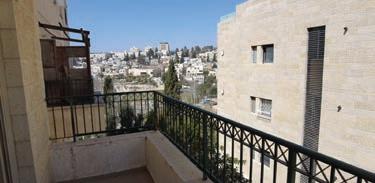
Responsibilities include: weekly bulletin/ monthly calendar/ periodic announcements/ managing whatsapp group/zoom shiurim; maintain video display & shul cloud account. Must be fluent in English & Hebrew and highly skilled in MS office.
Send CV to info@bkms.org.il
ONLY 10 MORE GLUING DAYS UNTIL PESACH ****************

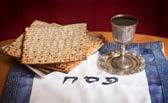

ARE YOUR TABLES & CHAIRS LOOSE OR SHAKY?
DO YOU NEED TO SPRUCE UP YOUR FURNITURE FOR THE CHAG?
STRENGTHEN & RECAPTURE THE ORIGINAL BEAUTY OF YOUR FURNITURE CONTACT US TODAY FOR ALL OF YOUR GLUING & COSMETIC REPAIRS
LAST FEW DAYS REMAINING - CALL TODAY!

“Vayehi bachodesh harishon bashanah hasheinit be’echad lachodesh hukam hamishkan. Vayakem Moshe et hamishkan…- in the first month of the second year [of the Exodus] on the first of the month, the Mishkan was erected. Moshe erected the Mishkan…” (Shemot 40;17-18) After intense labor, the Mishkan and all its components were finally complete and ready to be assembled. Yet the artisans responsible for the building were unable to erect the Mishkan. They approached Moshe Rabbeinu who put up the structure single handedly. The word “hukam” indicates that the Mishkan was established on its own, and just appeared as if Moshe Rabbeinu built it himself. We have some obvious questions here: Why couldn’t the people put up the Mishkan themselves? Why was it necessary for it to look as if Moshe Rabbeinu alone was putting it up?
The Saba of Slobodka in Ohr Tzafun explains that Torah is the true power through which the Shechinah comes down to earth. Although the physical structure is important, Torah is the core element that serves as the conduit to allow the Shechinah to dwell amongst us. Indeed, the Ramban notes the parallels between the various parts of Har Sinai and the sections of the Mishkan. Moshe Rabbeinu
was the individual who brought the Torah from heaven to earth, hence, he was the most appropriate person to inaugurate the building, the physical representation of connecting heaven and earth.
Rav Zaidel Epstein in Sefer He’arot adds that once the Temple was destroyed, the Shechinah is found in the four amot of learning Torah, i.e., every person can establish a place for the Shechinah to dwell in their midst through dedicating their lives to learning and practicing Torah. As Moshe Rabbeinu personally created a place for Torah within himself by making himself a ‘kli kibul”, a receptacle for Torah, Hashem erected the Mishkan through him.
Rav Zaitchik in Ohr Chadash adds another important component. The midrash teaches that Moshe Rabbeinu was distressed at having no part in building the Mishkan. Hashem saw his desire and yearning to be part of this special project, and gifted him with the honor of setting it up. Rav Zaitchik learns two important lessons; first, people who desire to do mitzvot but are unable to carry them out for whatever reason are so beloved by Hashem. Their burning desire and passion is considered as if they built a house for Hashem. Second, Hashem, kaviyachol, saw Moshe Rabbeinu’s pain and responded with deep sensitivity, even if it meant that the Mishkan would not be erected sooner. We can take this lesson, emulating Hashem, to be concerned for the feelings of those around us as we strive to build a mini Sanctuary within ourselves.
Tuesday, March 14 - Rebbitzen Shira Smiles’ shiur was sponsored by Leah Weinberger for a Refuah Shleimah for her brother Zvi Aryeh HaLevi Ben Chana and all of those who need a Refuah Shleimah.
Monday, March 20th - Rebbitzen Pearl Borrows shiur is sponsored by Shaindy Sohn in memory of her beloved mother, Miriam Reiss a”h ה”ע עשוהי ’תב הכלמ םירמ on her 10th yahrzeit ה”בצנת רדא ז”כ
Tuesday, March 21st - Rebbetzin Shira Smiles shiur is sponsored by Bracha Sukenik in loving memory of her father - yahrzeit is 3 Nisan
ל”ז אליב אדורו באז המלש ןב בד לאינד
Sunday, March 19th - Rabbi Breitowitz’s shiur is sponsored by Yardena Cogan Lux in loving memory of her father
Benjamin David Cogan z”l ל”ז ןגוכ דיוד ןימינב on his 52nd Yahrzeit א”לשת ןסינ ’א and her husband Shmuel Chaim Lux ל”ז סקול םייח לאומש 5th Yahrzeit ח”עשת ’ב רדא ח”כ
Rabbi Goldscheider’s shiur has been sponsored for the 2023 Academic Year
ל’’ז המלש ןב בוט םשו ה’’ע םהרבא תב םירמ תמשנ וליעל Rebbetzin Shira Smiles shiur is sponsored for the 2023 academic year by Dr. & Mrs. Menachem Marcus in memory of their parents, Rose & Dr. Emanuel Marcus z”l -
ל”ז סוקרמ השמ ןב יכדרמו ריאמ ףסוי תב לזייר Rosi and Ernest Strauss z”l -
ל”ז סוארטש דוד ןב לאינדו םהרבא תב דומיל
Rabbi Breitowitz’s Tuesday Shiur - Minchat Chinuch is sponsored for the academic year 2023 by Rabbi Refoel & Sharon Auman in memory of their parents Edith & Reiner Auman z”l
ד”יה לאפר תב ה”ע רתסאו ל”ז קודצ ןב הנוי and their son Rabbi Shmuel Eliyahu Auman z”l
י”נ לאפר ברה ןב ל”ז והילא לאומש ברה
Rabbi Goldin’s shiur is sponsored for the 2023 academic year by Dr. & Mrs. Menachem Marcus in memory of beloved aunts Irma Haas a”h and Hilde Myer a”h
Rabbi Manning’s shiur has been sponsored for the 2023 academic year
ל’’ז ןמלק ןב גילזו ה’’ע תידנרב תב הנרב תמשנ יוליעל Rabbi Taub’s weekly Thursday Parshat HaShavua Shiur is sponsored by The Jewish Legacy Foundation
Walking down King George St. in Jerusalem and want a cold bottle of water?
Come help yourself to a bottle at 52 King George.
In loving memory of Yoni’s wife Tziporah a"h, a true Eishes Chayil, always full of chessed, kindness and laughter, and brought life and strength to so many people, that she touched! She was like Aron, who loved peace and pursued peace.

Yoni thanks Hashem for having the opportunity of having Tziporah in his life, to learn of her caring, patience and happiness, to overcome her challenges. May Tziporah's Neshama be a light onto the world, in a time of darkness, and may her Neshama shine to Gan Eden. Yoni misses Tziporah with tears in his eyes, as Hashem gave him a gift, a crown jewel, now he returns her to Hashem. With thanks and Toda. Love,
YoniTo help refill the supplysend tax deductible donations for Be’er Tziporah a"h Bottled Water Gemach to Chabad of RechaviaRabbi Yisroel Goldberg email

IN A NEW BUILDING ON AGRIPAS ST CLOSE TO KING GEORGE THREE 2-ROOM APARTMENTS BEAUTIFUL, NEW, BRIGHT UNDERFLOOR HEATING, A/C, 2 ELEVATORS NIS 6100-6200/MONTH

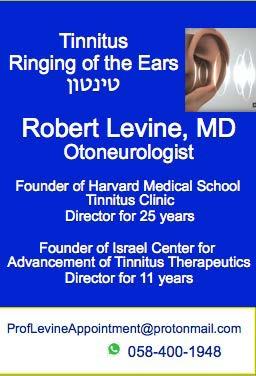


For Sale in the Heart of Talbiya
Right around the corner from the famous Chovevi Tzion Shul and up the road from the Inbal Hotel
4.5 Rooms, 130 sqm
2 Balconies (1 Open, 1 enclosed)
3 Exposures
Full of Light and Air Shabbat Elevator
Private Parking, Storage
Apartment on Pierre Koenig Street
3 bedrooms, 2.5 Baths
2nd floor-no elevator
A/C in every room
Rare & quiet
Ilana Nelson 054.5341403 www.integrityrealestate.co.il
Great investment/starter property!
Occupancy in 1.5 years
New Project on Mekor Chaim St.
Spacious 2 bedroom (75 sqm)


High floor with view (7th floor)
Sukka Balcony
Shabbat elevator
Private parking & storage
High-end specs
Occupancy 06/24
Great Apartment with Incredible Views
Shofet Chaim Hacohen Street
4 rooms + 2 full bathrooms
Spacious and full of light
Central A/C + heat
3 exposures
Shabbat elevator
Parking
New Rental in San-Simon/Rasco

140 sqm, Large 4 bedroom
3.5 bath
Large Succa balcony (12 sqm)
Stunning views!
Brand new with high-end specs
Floor heating, Central VRF A/C, Shabbat elevator, 2 covered parking, storage


Available: Immediately
Yitzchak Kowalsky
054-766-0338
Yitzchak@yykrealestate.com
www.yykrealestate.com













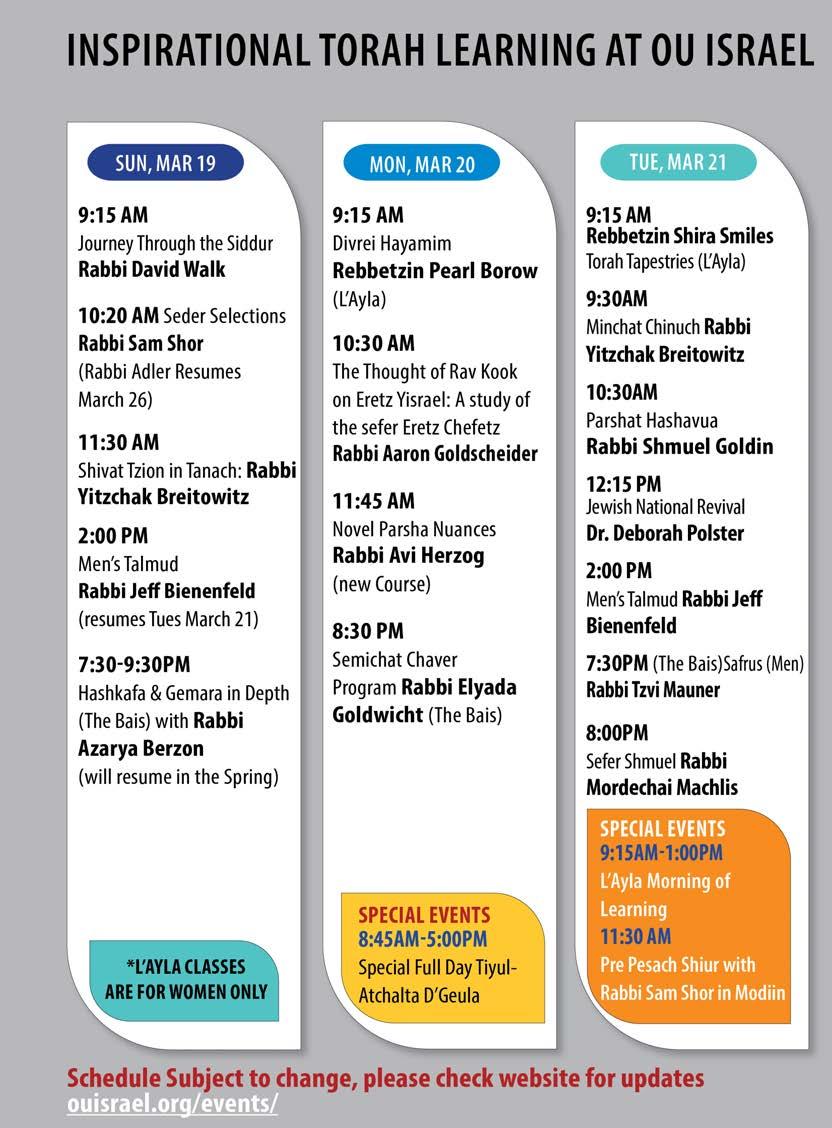




Director Hadassah Jacob 052-384-7230
Monday Evenings 7:00 - 9:00pm
WOMEN'S WRITING WORKSHOP AT THE OU ISRAEL CENTER
Monday mornings 10.30-12.30
For more details, call Ruth 02-628-7359 or Judy 054-569-0410
Monday, March 20, 7:30pm at the OU Israel Center
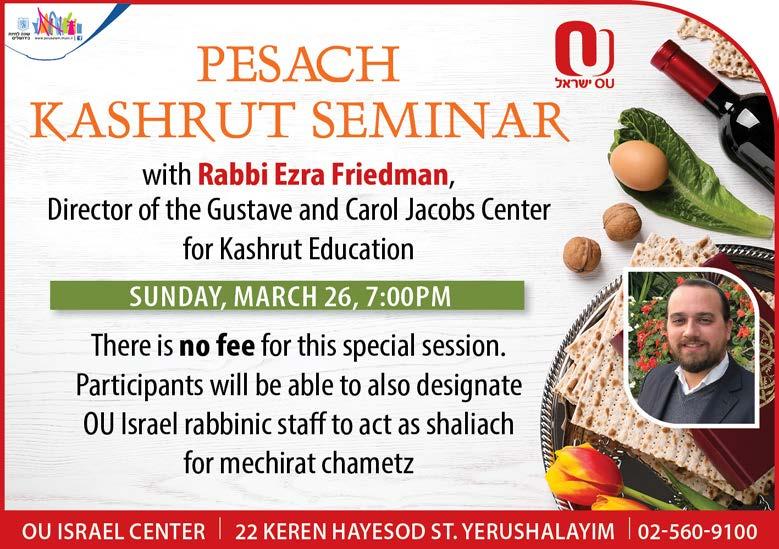
Comprehensive Report: New PLO policies of US Embassy, New movie on UNRWA Jerusalem incitement filmed on location in Shuafat and... how to communicate to US Congress
Presenter, David Bedein, MSW Investigative reporter & community organizer
...המלש
• Miriam Tovah Chaya bat
Chanah Elisheva Rivka
•Yosef Ezriel ben Chaya Michal
הלחמ ןב ןתנוהי •
רתסא ןב המלש •
הכרב הנח ןב השנמ םהרבא •
• Esther Fruma bat Baila
• Yisrael Leib ben Chana
• Chana Bat Bruriah

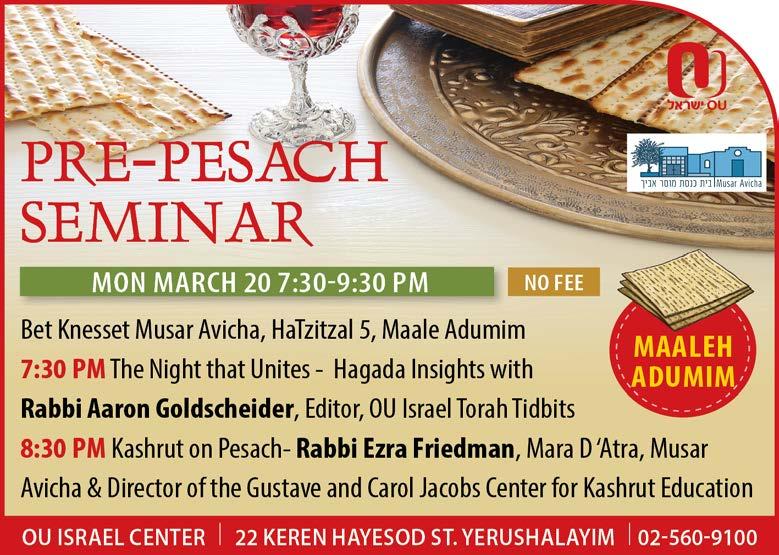



HELP US NAME THE NEXT BIKEY MCBIKEFACE.

CARRY ON THE LEGACY OF TERROR
VICTIM YONI JESNER.
EVERY DONATION IS ELIGIBLE TO SUBMIT A NAME FOR THE NEW AMBUCYCLE.


THE FINAL NAME WILL BE CHOSEN BY POPULAR VOTE.


https://israelrescue.org/younameit


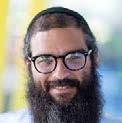
Rebbe Yeshaya Steiner of Kerestir, zy’a, “Reb Shayaleh”, was beloved and respected as a Tzadik, Rebbe, and miracle worker who dedicated his life to the well-being of Jews. A Gaon in Torah and paradigm of mesirus nefesh and ahavas Yisrael, Reb Shayaleh referred to himself as the Aibishter’s Kecher, ‘God’s Cook’. This was because he was continuously welcoming and feeding all who came, from talmidei chachamim to the simplest of Jews from across Hungary and Europe. Reb Shayaleh provided them with a place to stay, hachnasat orchim, and care for their material and spiritual needs.
Pinchas’l, an unfortunate vagabond who suffered from emotional instability, was a regular guest. He was rude and unkempt,
and would spend much of his time sitting on the Rebbe’s balcony smoking cigarettes, even on Shabbos. The flagrant disregard for kedushas Shabbos was just too much for the gabbaim, who were concerned not only for the honor of Shabbos and the kavod of their rebbe, but for the fact that he was negatively influencing others. They suggested Pinchas’l find other arrangements away from the home and beis medrash of the tzadik.
Reb Shayaleh looked at them in astonishment. “Should I send a Jew away from my home?! I will be ois rebbe, I’ll close my kremel, I’ll give it all up… but a Yid will never be sent away from Kerestir!”
This Shabbos we relive the first Mitzvah given to Am Yisrael as a Nation, kiddush ha-chodesh:
month shall be for you the first of the months.” Earlier commandments were not addressed to the Nation, but were individual in nature, and whatever pertains to
our journey as an entire people pertains to each one of us, even today. This Mitzvah of Rosh Chodesh was given on the First of the Month of Nisan, two weeks before Yetzias Mitzrayim. It was given amid darkness and suffering, while Pharaoh was bathing in Jewish blood, and Am Yisrael was teetering on the 49th level of tumah, almost at the point of no return.

One of the most essential aspects of this first communal Mitzvah is its instruction in Divine partnership; a day of Rosh Chodesh was to be established in collaboration with Hashem. Two witnesses were to come to the Beis Din in Yerushalayim, whoever they might be — perhaps two common Jews who had looked well and recognized the first, tiny luminous curve of the moon as it was still covered in darkness. Their testimony to the Beis Din, when accepted,
would set the Divine calendar of that month, including the date of its Yom Tov or festival. The mitzvah of Rosh Chodesh thus included a vast empowerment of the ‘every man’ of Klal Yisrael, a demonstration that HaKadosh Baruch Hu believes in each of us, and counts on all of us.
The system of establishing chagim and moadim depends on our identifying and sanctifying the new moon:
, “These are Hashem’s appointed, holy occasions, which you shall designate in their appointed times” (Vayikra, 23:4). In this verse, םָתֹא, osam, “them”, meaning the holy occasions, is spelled without a letter vav, and so the letters also spell the word םֶתַא, atem, ‘you’, plural. A seemingly insignificant word with an almost unnoticeable lack of a letter, therefore teaches us that the new month
must be proclaimed not only by ‘you’, singular, the head of the court — but also by atem, ‘each of you’, the entire people (Rosh Hashanah, 24a).
The Gemara discusses the possibility of mistaken testimony or of false witnesses intentionally misleading the court regarding a sighting of the new moon. Hashem says, “Whether you have proclaimed them at their proper time or whether you have declared them not at their proper time, I have only these Festivals as established by the representatives of the Jewish People….” ןיעטומ וליפא ,ןידיזמ וליפא ,ןיגגוש וליפא, “You (atem) are authorized to determine the date of the new month even if you unwittingly establish the new moon on the wrong day; you, even if you do so intentionally; you, even if you are misled by false witnesses. In all cases, once the court establishes a day as the new moon, it is sanctified, and God grants His consent”
(Rosh Hashanah, 25b).
Even if the declaration of Rosh Chodesh is scientifically inaccurate, the calendar remains as it stands, with all its halachos, and observances. This is no small fact: it will mean that Jews will eat chametz on days that scientifically ‘should have been’ Pesach. We will fast on a day that ‘technically’ wasn’t supposed to be Yom Kippur.
HaKadosh Baruch Hu humbly ‘changes’ the day to the one we decide it should be, as it were. The Creator of time takes into account humanity’s flaws and mistakes and makes them holy.
Rebbe Yitzchak Meir Alter, the Chidushei haRim, comments on the Gemara, above and says that reading otam, ‘them’ as atem, ‘you’, relates to another pasuk in which
atem appears: םֶכיֵהֹלֱא 'הַל םֶּתַא םיִנָּב, “You (atem) are all children of Hashem, your Divinity.” And this is precisely why the Gemara says, “You are authorized to establish the time in which the Mitzvah of Rosh Chodesh will apply: ןיעטומ וליפא ,ןידיזמ וליפא ,ןיגגוש וליפא, even when mistaken, even when malicious, even when misguided.” No matter how imperfect, flawed or corrupt, a Jew remains a Jew — a child of Hashem — invited by his or her Divine Parent to collaborate on establishing the mitzvos of the Torah.
During our enslavement, in terms of behavior, we were not all that different from Egyptians. Not only had we fallen into the darkness of idol worship, we did not yet have the Divine support, life-instruction and mission statement of the Torah. But then came the first mitzvah, Kidush haChodesh. Rosh Chodesh becomes a special time, place and process, in which our intimacy is expressed in the mitzvah of Ha-chodesh ha-zeh lachem. It is the beginning of our intimate relationship and partnership with Hashem; the unconditional kesher of every Jew with Hashem.
May we follow, in our own way, the derech of Reb Shayaleh — the path of the true tzadikim and strive to identify and honor the unconditional holiness and Divine kesher of every person we meet.
Ben Zoma says: Who is honored?
The one who gives honor to others…. (Avos, 4:1)
Join


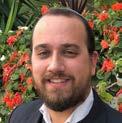
Unlike most other year-round forbidden foods, the restrictions of chametz (leavened grain material and its bi-products) on Pesach govern not only its consumption (issur achila), but also deriving any benefit (issur ha’naah). In the last few decades it is common to see numerous products with a stamp for Pesach whether it be toilet cleaner or dishwasher fluid. Although much can be written about these products as they relate to Pesach in short there is no need to have such products kosher for Pesach. Toilet and oven cleaners as well as dishwasher detergents are poisonous even if such products had chametz (very unlikely) they would have lost this status of chametz once the product was mixed and render no halachic concerns. There are however certain inedible products where one might need to purchase with caution. This article will touch upon using or owning inedible products on pesach.
These items are singled out as being subject to a disagreement among Rabbinical authorities. The question hinges on whether we can accurately describe them as being nifsal (inedible). It is true that no one would sit down to eat a tube of lipstick,
or drink a cup of mouthwash, but these items are made and used with the understanding that some of it will be swallowed. They are often loaded with sweeteners and are given a good flavor. Many consumers select a particular product on the basis of the flavor. Some rabbis have argued that the term nifsal cannot be applied under these circumstances. Because some of the product is deliberately ingested, we run in to the concern of achshivei. The OU Poskim (Rav Yisroel Belsky and Rav Hershel Shechter) themselves dispute this matter and as such as an organization OU kosher does not take a firm position on this matter, and recommends that each individual consults their rabbi for guidance. Although it should be mentioned that these products are now readily available in Israel certified kosher for Pesach and as such one should try to purchase and use only approved products (see Sefer Hilchot Pesach p.27).
Paper plates (paper towels, napkins)
Although paper (especially biodegradable paper) can be made from corn or wheat stalks, this is not a concern. Stalks are not chametz. They are not even kitniyot. Only the kernels of wheat or corn are forbidden on Pesach, the stalks are fine. However, paper products often contain starch. Although it is true that paper plates themselves are inedible, but shouldn’t we be concerned that the starch can leach out of the plate and enter into our food?
Shouldn’t this be similar to placing hot food on a chametz plate that was not kashered for Pesach? Even though a plate is inedible, one may not use a chametz plate on Pesach unless it was kashered. Shouldn’t the same apply to a paper plate as well?
There is fundamental difference between a chametz plate and a paper plate. The starch used to make paper plates is not chametz. It would be at most kitniyot. Common sources of starch in the paper industry include corn (kitniyot) and potato (not kitniyot). A small amount of starch is used in the paper making process. It is mixed with pulp to strengthen the body of the plate, and it is used in the coating to bind together chemicals that are applied to the surface for gloss. In either case, the starch is the minority, and the rule with kitniyot is that it will be nullified in a simple majority. A real plate that was used with chametz or kitniyot requires kashering. Even if it was only used with a small amount of chametz, the chametz cannot be nullified in the plate. This is because the plate remains whole, and only the taste that was absorbed in the plate leaches out into the next food. That is not the case with a paper plate. There are no two separate entities. The starch is nullified in the plate and will leach out together with the rest of the plate. Since the kitniyot will always remain in mixture, it is nullified and does not pose a concern. Others authorities claim that even when there is Chametz in the plate it is not
edible and does not affect that status of the plate in relation to Pesach (Ibid p.48)

Creams, lotions and perfumes often contain alcohol. But not all alcohol is chametz. Isopropyl alcohol and methanol are not made from grains. Even grain alcohol (ethanol) is likely not chametz. The vast majority of industrial ethanol in the US is made from corn (not chametz); however, there are parts of the world were chametz ethanol is common. Although we accept that creams, lotions and perfumes are nifsal, but is there a concern that one can distill off the alcohol and make it drinkable again? To avoid paying alcohol tariffs, which are only applied to drinking alcohol, the government requires that all industrial alcohol be denatured. These denaturants are difficult to remove. Rav Moshe Feinstein was asked about the permissibility of using creams that contain chametz alcohol. He ruled that it is permitted, since the alcohol was added to the cream before Pesach, it is nifsal. No one will consume them. In truth, there are two reasons to permit the use of these products on Pesach. The alcohol is denatured and there is a good chance that it contains no chametz at all.


In the zemer we sing each Shabbat evening, Kol Mekadesh Shevii - we see a reference to the Temple’s future re-construction.
The stanza reads: “Samcheim bevinyan shalem” Rejoice in the complete building. What exactly is the connection between Shabbat and the building of the Beit Hamikdash?
The opening verses of Parshat Vayakhel (Shemot 35:1-3) find Moshe once again instructing Bnei Yisrael regarding the sanctity of Shabbat. Most specifically, in verse 3 we read the instruction: ‘Lo tivaaru eish bechol moshvoteichem b’yom hashabbat…”You shall kindle no flame in any of your dwelling places on the Sabbath day…”
This verse is commonly interpreted to connote the obvious legal ruling - the prohibition against kindling flames of any sort on Shabbat. However, there is a beautiful, and perhaps more significant teaching regarding this verse from the Torah commentary the Shnei Luchot HaBrit (Two tablets of the Law) written by the 16th Century Kabbalist, Rabbi Yeshayahu Horowitz, the Shela’h HaKadosh of Prague zy’a. He writes:
“Lo tivaaru eish bechol moshvoteichem b’yom hashabbat, al tivaaru eish shel
machloket bayom hashabbat! Zeh hayom shenityached yisrael zeh lazeh...” “You shall kindle no flame in any of your dwellings on the Sabbath day - do not fuel the flame of conflict or disagreement on the Sabbath day! Shabbat is the day that brings each Jewish person closer to each other...”
This teaching is so powerful. The biblical prohibition to not spark a match, (or for that matter any of the various Shabbat regulations), is but one aspect of the essence of Shabbat. Perhaps in refraining from even these seemingly mundane acts, we are somehow meant to take stock, acknowledge and even reach out to our fellow Jew; to find a common bond, to set aside our differences, and reflect and build on the bonds that join us, rather the fractured divisiveness that causes so much confusion and disagreement.
This, says the Darchei Noam, the Rebbe of Slonim shlita, is the meaning of the stanza in our Shabbat zemer, Samcheim B’vinyan Shaleim. Each Shabbat we rejoice in the knowledge that the very essence of Shabbat
is building, not in physically laying the stones of the Temple, but in spiritually building the bridges between each member of the Jewish people, building that unified sense of purpose, that shared awareness, not only of where we come from, but where we are in the here and now. Only then, when we once again achieve that understanding and genuine love and respect for one another, can we also, together, begin to truly build for the future.
The Slonimer Rebbe teaches us that this is the essence of each and every Shabbat, that each week we have our opportunity to do our small part in building the Beit Hamikdash. Yehi Ratzon, may we indeed merit both to appreciate the great gift that is Shabbat Kodesh, and to actualize the power for building a better tomorrow that is inherent in the sacred unity that Shabbat brings to Am Yisrael.
Jerusalem, Kiryat Moshe - 3 minute walk from CBS/light rail, 7th floor in NEW BUILDING, 150m + 40m terrace, 5 bedrooms, 3.5 bath, 10m machsan, 2 private parking spots
6.850M NIS
US 786 405 8390
Israel 054 779 7264



Close to forty years ago, a loud quarrel exploded during the Friday night Shabbat meal in my Yeshiva, Yeshivat Har Etzion/ Gush. I was a quiet and naïve American, slowly acclimating to life in an Israeli yeshiva, but I distinctly remember the raised voices and the impassioned arguments swirling around me. My Shababt meal had turned into a contentious ideological debate, and I will never forget that meal, nor the many faces and voices of that memorable debate. The argument erupted in the aftermath of a Friday night speech or sicha, delivered before maa’riv by our revered Rosh Yeshiva, Harav Yehuda Amital. The final pasuk of Pekudei and of the entire sefer Shemot, portrays the shechinah of Hashem descending into a newly constructed mishkan. This epic scene of thick clouds enveloping the mishkan

Great Investment! 2 rooms, mirpeset, underground parking, in new building under construction, great location. Starting at 1.89m shekel. 3 & 4 rooms also available. Baka very close to Emek Refaim, 4 rooms, 82m in a tama 38 building. Elevator, mirpest & storage. Will be ready in 3 months. Amazing price of 2.99m shekel.
For rent in the German Colony on Emek Refaim street, 2 rooms, one floor up, good shape, parking. 5,100 a month.
and preventing Moshe’s entry closes the dramatic sefer of Shemot.
Chazal’s nickname for the book of shemot is “sefer Ha’Geulah” or the book of redemption. This sefer chronicles our first redemption from the bondage of Egypt and from the tyranny of Paraoh. Our first geulah serves as the template for all future redemptions.
Yet, bizarrely, this book of redemption culminates in a barren desert, hundreds of kilometers away from the chosen Land of redemption.
Addressing this unusual scene, Rav Amital referred us to the Ramban’s introduction to sefer Shemot. The Ramban’s commentary to the Torah is an encyclopedic and seminal work delineating the fundamentals of belief and of religious experience. My other Rosh Yeshiva, Harav Aharon Lichtenstein once remarked that if he were deserted on an abandoned island with an option to bring one sefer, he would choose the Ramban’s commentary to the Torah.
Amazing family friendly house in the Greek Colony available for Pesach rental
5 minutes from Emek Refaim, 40 min walk from the Old City, 6 bedrooms - sleeps 15+, 5 bathrooms, 3 floors, 200m, large kitchen, large yard (with basketball hoop), Strictly Kosher Available March 30 - April 17
For more details: 052-238-0638
Robert@kleimanrealestate.com
The Ramban introduces each sefer of the Torah with a preface distilling the overall theme of that book. In his well-known introduction to sefer Shemot, the Ramban describes redemption as a revival of the spiritual condition of our ancestors, or a return to םתובא תולעמ. When Hashem’s presence descends into our world, as it did after the mishkan was completed, this original and perfect spiritual state is recovered thereby achieving redemption. Evidently, redemption isn’t limited to geography or to the land of Israel, but is experienced anytime we encounter Hashem’s presence.
You can imagine how this revolutionary concept enflamed the patriotic Israeli students who had been trained to view redemption as bound to the land of Israel.

In truth, the final redemption of history can only unfold in Israel as our people convene back in our Homeland and beckon the entire world to encounter Hashem in Yerushalayim. Final redemption is an event limited to Israel, but the ongoing process of redemption is continuous, unfolding whenever and wherever we rendezvous with Hashem.
A “long” redemptive process spanning centuries is the leadup to the final “moment” of history, and this “long” redemptive process isn’t limited to one specific set of events or one specific location. Redemption is the engine constantly driving history to its inevitable terminus.
In his comments to Megillah (17), Rashi differentiates between the beracha of ga’al yisrael or לארשי לאג which concludes the final section of our daily keriyat shema tefillah and the phrase go’el yisrael or לארשי לאוג which
concludes the beracha in shmoneh esrei. The former beracha refers to an event – our first geulah from Egypt, but the latter phrase refers to the ongoing process of redemption which has braced Jewish history.
There is an unhealthy and even disrespectful tendency to regard the pre-1948 era of Jewish history as a pre-redemptive period marked by helpless suffering and perpetual victimhood. Israelis often disparage a ידוהי יתולג or a shameful “Jew of exile” who was vulnerable and powerless, as opposed to the proud ילארשי ידוהי who can protect and defend themself. Everything prior to 1948 had absolutely no redemptive resonance.
This sharp bifurcation between pre-1948 and post-1948 makes it challenging for Israelis to appreciate the richness and depth of Jewish experience over the past 2000 years, and is partially responsible for the religious crisis which many Israelis struggle with. If we only look forward it is difficult to look back in appreciation.
This long view of redemption integrates our past with our future. Our redemptive heroes aren’t limited to Herzl and Ben-Gurion but also include Rebbe Akiva, the Rambam, Rav Yosef Karo and every poshete yid or simple Jew who preserved faith and Jewish religion under unimaginably demanding conditions. Redemption began in 70 AD, the moment the last Jew to leave Jerusalem performed the very first mitzvah. Every mitzvah, every moment of Torah study and every act of chesed, has been contributing to this gradual and cumulative process.
Though redemption has been aggregating for thousands of years, in 1948 two changes
occurred. Firstly, the pace began to rapidly accelerate. Secondly, in 1948 redemption shifted from the backstage of history to the front stage. Before 1948 the redemptive process was purely metaphysical, invisible to the naked eye. History seemed unmoved by our religious acts, even though we knew that in the background, our mitzvot were advancing redemption.
In 1948 redemption surfaced in our visible world. We are now building a country, infrastructure, homes, and cities which will welcome moshiach. Our generation has been privileged to experience and participate in redemption upon two stages- the backstage of the metaphysical world and the front stage of history.
The Ramban’s view of geulah also underscores that a return to our Land is redemptively incomplete until and unless we draw Hashem’s presence into our state. Merely living in the Land doesn’t redeem us.
Many olim suffer a redemptive lapse or redemptive withdrawal. Euphoric at returning home, they often suffer religious setbacks. Life in Israel provides a false sense of religious security: what can go wrong where everyone is Jewish, and everything is kosher? Many of the strict religious safeguards and precautions which were protected when living overseas, are relaxed. Stepping off the plane and integrating into Israeli society is not enough to be considered redeemed. Bringing Hashem to our state and to our world is the essential goal of redemption.
Furthermore, the Ramban’s view of redemption helps us better calibrate our
redemptive investments. Over the past 50 years our settlement of greater Israel has transformed our people. The 1948 map of Israel was a hollowed-out parcel of land, devoid of much of the Biblical homeland. In 1967 we returned to the corridor of Jewish history stretching from Shechem in the North, snaking its way through Yerushalayim, Beit Lechem, Chevron and Be’er Sheva. Our nation was carved out in this region and our return in 1967 felt like a return to the pages of Tanach.
This project was blessed by Hashem and we have defiantly spearheaded this difficult challenge. However, we have also invested too much in settling land and not enough in other areas of Israeli society or in other national agendas which are also part of redemption. Sadly, our efforts at settling the land have isolated us from the rest of the Israeli population, making it even more difficult to both appreciate secular Israelis and to inspire them to our religious values.
Returning to our Land is insufficient to be considered redemption. We must invest in all areas and all sectors of Israeli life to assure that we craft the type of society which can house Hashem’s presence.

By returning to the condition of our ancestors in our Land we can close history.
On HaPalmach - great 4 room apartment, 92m plus large garden in use, exclusive.

Asking 4.95 million NIS


Palmach - 4 rooms, beautiful, 105m, porch, 2 parking spots, machsan, asking 6.1million NIS

Smadar 050-3114040 // 02-642-4329
smadi_bida@walla.co.il
We are hiring regional reps in the following cities:
Beer Sheva
Beit Shemesh
Carmiel - Golan
Chashmonaim
Gush Etzion / Efrat
Haifa
Jerusalem
Modi'in
Ramat Beit Shemesh
Ra'anana
Rechovot
Tel Aviv
FLEXIBLE HOURS - PART TIME POSITION
JOB RESPONSIBILITIES INCLUDE:
• Regular outreach calls to new Olim
• Maintaining region's "NBN Israel Calendar"
• Communcation with municipal resources
JOB REQUIREMENTS
• Anglo Oleh with over three years in Israel
• Must be living in the region they are representing.
For more information and to apply: hr@nbn.org.il


There’s a famous line regarding the Jewish calendar, the Jewish holidays are either very early or very late, never on time. I like to say that it’s always Pesach unless it’s not. Why is it that the calendar constantly shifts - how is the Jewish calendar arranged? In the times of the Temple, witnesses who saw the moon would go to a special tribunal who, after questioning the witnesses, would declare the beginning of the new month, Rosh Chodesh. As seen in this week’s Maftir reading, G-d gave the calendar into the hands of man when He said,
This month shall mark for you the beginning of the months. The determination of the

month was handed to the Jewish people to empower a nation of slaves with the control of time. But what happened to the calendar after the destruction of the Beit HaMikdash? Hillel II with his deep knowledge of science and math created a calendar template for all future generations and sanctified all the months until the end of time. Even today, his calendar system is used to know when Rosh Chodesh and the holidays take place. The Yalkut Shimoni shares a powerful insight on the calendar. What will happen in Messianic times? While in the days of the Beit Hamikdash, Rosh Chodesh was based on sight and today we use the extensive calendar calculations, how will we know when Rosh Chodesh is when Moshiach comes? In this week’s Haftorah, the Navi Yechezkel shares that the gates that were closed for six days a week will open for Shabbat and for Rosh Chodesh
be opened divinely on both Shabbat and on Rosh Chodesh and thus we will know that Rosh Chodesh has arrived. It is as if the Divine Presence says, I want to be a part of the process of determining your months, your holidays, your year.
Knowing what our calendar design will ultimately be provides a message for us today. Hashem’s insistence on participating in our calendar means He celebrates with us and wants us to do the same with Him. Time then, is holy. We have an opportunity to infuse our calendar with G-dliness. Each and every day is a Divine gift, a chance to make our time worthwhile. The calendar markers of Shabbat, Rosh Chodesh and holidays are Hashem’s personal invitation to us to pause and add a little bit more of Hashem into our lives. May we be blessed with abundant time on this Earth and the wisdom to suffuse it with Hashem’s Holy Presence.



Premium delicious shabbes meals




Openning hours:


Thursday 12 pm-2 am
Friday 8 am-3 pm
We



They look to us now shriveled, their outer appearance is meager, but inside they are full of life and content. We circumvent the observance of shemitah (the Sabbatical year) by selling the land to a non-Jew…But in these minute grains great potential for growth is contained, for all that they long, for all that has grown in the past, and all that they will eventually produce (Eretz Chefetz 3:6).
Rav Kook expresses the idea that together with the return to the Land, the Jewish people are also becoming reacquainted with the many mitzvot which they were unable to observe during the long exile. However, these mitzvot, by and large, are unable yet to be fully observed.
He cites the highly debated issue of Shemitah, allowing the Land to lie fallow in the seventh year: At this time, Rav Kook writes, we are forced to “circumvent the observance of Shemitah by selling the Land to a non-Jew…”.
It is striking that Rav Kook cites this concrete example which undoubtedly was a watershed moment in the early years after arriving to the Land of Israel: Namely, the Shemitah controversy, which arose in 5670 (1910).
Farmers were working hard to sustain their incomes in a new Land. Rav Kook, upon settling in Yaffo, was forced to face the controversial issue of how farmers are to follow the Torah command that obligates them to refrain from tending to their agriculture for a full year.
In the light of the economic realities of the time and the unbearable hardships that would be incurred by an overly stringent attitude, Rav Kook defended the earlier (5649/1899) ruling of Rabbi Isaac Elchanan Spector of Kovno that the prohibition of working the Land on the Sabbatical year may be circumvented by selling the Land to a non-Jew.
Rav Kook’s heter mechira (“dispensation by sale”), as it is known, placed him in a most unenviable position. On the one hand, many of his rabbinical colleagues were outraged by his permissive attitude and called for literal observance of the law. On the other hand, antireligious elements among the chalutzim (pioneers) mocked the entire concept of Shemitah - including, or especially, the “legal fiction” of selling the Land to a nonJew for the duration (actually two years).
Rav Kook defended the ha’aramah or
circumvention as a necessary hora’at sha’ah (emergency measure), which preserves intact the aspiration to complete fulfillment of the commandment in the future, though taking into account the vicissitudes of the present. (Orot, Naor’s translation and notes, pp. 277-278)
In his work Shabbat Ha’aretz Rav Kook explicates his permissive attitude to the practical implementation of Shemitah in his day. He reveals, in the lengthy introduction, the philosophic richness and kabbalistic depth of the mitzvah. The conceptual underpinnings that Rav Kook gives to the halachot of Shemitah and Yovel (the Jubilee year), is one of Rav Kook’s exceptional contributions to the domain of Taamei HaMizvot, the rationale of the mitzvot.
Rav Kook perceived in the laws of Shemitah profound spiritual meaning:
“What Shabbat does for the individual, Shemitah does for the nation as a whole. The Jewish people, in whom the Godly, creative force is planted eternally and distinctively, has a special need to periodically reveal the divine light within itself with full intensity. Our mundane lives, with their toil, anxiety, anger, and competition, do not entirely suffocate this creative force. During Shemitah, our pure, inner spirit may be revealed as it truly is.” (Introduction to Shabbat HaAretz, Sinclair, p. 57)
The weekly Shabbat was given to facilitate the holiness of the individual whilst the Shemitah and Yovel years prohibiting farm work and private ownership over its products and proclaim freedom to the enslaved, were directed at investing the whole nation with a spirit of forgiveness and repentance and remedying the injustices of the past.
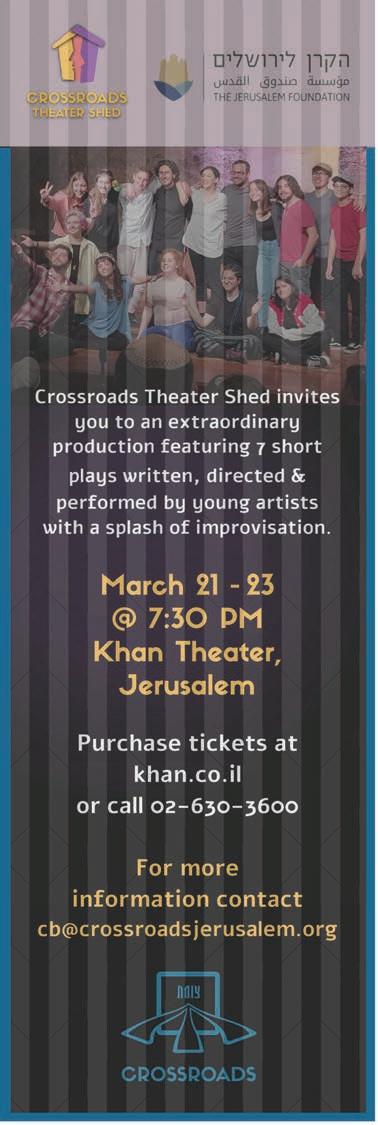
RAV DANIEL MANN
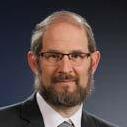
Question: What are the rules of when one does and does not do nefilat apayim (putting one’s head down and partially covering it) during Tachanun?

Answer: The sources and depth of discussion regarding this question are underwhelming, but the background is fascinating.
Although no mishna mandates doing nefilat apayim in davening, several gemarot (including Megilla 22b and Bava Metzia 59b) refer to it as a known entity. Some used to do it as a more elaborate prostration than now practiced (see Megilla 22b).
The idea of not doing nefilat apayim without a sefer Torah comes from a short statement in the Rokeach (Tefilla 324), who cites as inspiration a pasuk regarding Yehoshua, who in a time of need, fell on his face and beseeched Hashem “before Hashem’s ark” (Yehoshua 7:6). The Beit Yosef (Orach Chayim 131) is unimpressed with the Rokeach’s assertion’s halachic basis. Although he does say, “If it is
an accepted tradition, we will accept it,” he does not cite the Rokeach in the Shulchan Aruch. The Rama (OC 131:2), though, does cite this requirement.
Concerning details, the Rama (ibid.) says that people davening in a courtyard that is open to a shul do nefilat apayim, as does an individual at home reciting Tachanun at the same time as the shul. We will not go into the details and permutations of these mainly uncommon occurrences (see Mishna Berura 131:13-14).
One common question is what needs to be present. The Rama writes that there should an aron with a sefer Torah in it. While the pasuk mentions the aron of Hashem, the Rokeach mentions only a sefer Torah as being required, and the Mishna Berura (131:11) says the sefer Torah is the determinant. Igrot Moshe (OC, IV:21) refers positively to a case where the sefer Torah is kept in the room in a more secure place than the aron kodesh. Ishei Yisrael (25:(36)) cites Rav S.Z. Auerbach as positing that an empty aron kodesh that houses a sefer Torah only on days it is used suffices, apparently even if the sefer Torah is in a different room on this day.
The Mishna Berura (ibid.) brings a machloket Acharonim on whether sifrei kodesh other than Torah scrolls justify doing nefilat apayim. Some say that sefarim are enough if it is the people’s regular place to daven (see Igrot Moshe, OC, V:20; Beit Avi
The Orthodox Union - via its website - fields questions of all types in areas of kashrut, Jewish law and values. Some of them are answered by Eretz Hemdah, the Institute for Advanced Jewish Studies, Jerusalem, headed by Rav Yosef Carmel and Rav Moshe Ehrenreich, founded by HaRav Shaul Yisraeli zt”l, to prepare rabbanim and dayanim to serve the National Religious community in Israel and abroad. Ask the Rabbi is a joint venture of the OU, Yerushalayim Network, Eretz Hemdah... and OU Israel’s Torah Tidbits. IV:85), and/or if the sefarim are permanently there (Dirshu 131:17), perhaps in a bookcase (Halichot Shlomo, Tefilla 11:(37)).
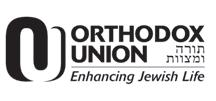

The minhag is that Yerushalayim provides enough “before Hashem” sanctity to do nefilat apayim without any sefarim (see Siddur Olat Re’iya; Igrot Moshe, Yoreh Deah III:129). It is logically questionable whether and why this should apply outside the Old City (see Halichot Shlomo ibid. 11).
Should one do nefilat apayim in a case of safek/machloket whether it is called for? One would think the stakes are low – What could be wrong with doing it when not called for? Is it a big deal to do Tachanun without it? However, study of the sources of nefilat apayim (including gemarot, Rambam (Tefilla 9:5), and Shulchan Aruch (OC 131)) demonstrates that the raison d’etre of nefilat apayim is the body position, whereas the specific words of supplication (which we call Tachanun) to be used are an afterthought (explaining lack of focus and greatly varied texts among eidot). On the other hand, nefilat apayim is not a “why not?” practice. One may not to do it at night (Shulchan Aruch ibid. 3), even though Tachanun may be recited then (Mishna Berura 131:16). Although the Shulchan Aruch mandates nefilat apayim, in recent times, most Sephardim say Tachanun without nefilat apayim because of kabbalistically-based fear for one’s life if he does it improperly (see Yalkut Yosef, OC 131:16).
Like the 13 Middot (the two are often
paired), nefilat apayim makes for very powerful prayer (see story in Bava Metzia 59b). But it is viewed as a “nuclear option,” which needs the right conditions (see Shulchan Aruch ibid. 8). Therefore, it is appropriate to take a moderate approach (not overly lenient or stringent) in deciding between opinions.
Shabbat March 24-25 (Vayikra)
deadline for ads: Sunday, March 19
Shabbat March 31-April 1 (Shabbat Tzav-Hagadol/Pesach/ Sh’mini)
deadline for ads: Thursday, March 23
Shabbat April 21-22 (Tazria-Metzora)
deadline for ads: Sunday, April 16
Shabbat April 28-29 (Acharei-K’doshim), deadline for ads: Thursday, April 20
please email or call Ita Rochel ttads@ouisrael.org/ 02-5609125
is reluctant to send Yishmael away and Yitzchak seeks reconciliation with Yishmael and seeks to bless Esav.

The wine should not be used in an unconventional fashion or in ways that cause it to be spoiled or wasted. For example: meat should not be marinated in holy wine, since the marinade will be disposed after use. However, it is permissible to use wine in cooking or baking to enhance the food’s flavor. Foods prepared with shemitah wine have kedushat shevi’it and all shemitah laws pertain to these foods.
After drinking the wine, it is permissible to wash the cup as usual, even if a few drops are left in the cup. However, if there is a significant amount of wine left in the cup, it should be treated in accordance with the laws of kedushat shevi’it.
If the shemitah wine bottle breaks, or wine spills on the floor, it is permissible to clean the floor/ mop up the wine as usual.
It is permissible to mix holy shemitah wine with regular wine. Holy wine should
BY RABBI MOSHE BLOOM en.toraland.org.il
6th Aliya (25:1-11) Avraham marries Keturah; they have 6 sons. All that Avraham has goes to Yitzchak; these are sent eastward with gifts. Avraham dies at age 175; he is buried by Yitzchak and Yishmael in Ma’arat Hamachpelah. Yitzchak is blessed by G-d: he lives in Beer L’chai Roi. The transition from Avraham to Yitzchak is complete. While G-d has been a silent partner in this parsha, here He completes the generational transfer – He blesses Yitzchak. The Jewish people will be Yitzchak and not Yishmael.
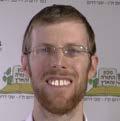
constitute the majority of the mixture. If a significant amount of wine is left in the goblet, it is best to reuse the wine at a later time. So that wine will not be considered pagum (defective, and thus forbidden to use for kiddush), add a small amount of wine from the bottle to the cup. Afterwards, it will be permissible to pour the wine in the goblet back into the bottle. If you do not wish to reuse the wine, keep the wine in an uncovered cup overnight (linat lailah). In the morning it will be permitted to spill out the wine.
Kiddush wine that spills onto the saucer/ plate should be drunk. If it is a very small amount, it can be poured into the sink.
7th Aliya (25:12-18) The generations of Yishmael are enumerated. Yishmael dies. His descendants dwell from Egypt to Assyria. Yishmael’s story is brief. He has numerous and powerful offspring. The brevity
Havdalah
echoes tions woman and began father’s that his icant the
The posekim dispute whether it is permissible to use shemitah wine for havdalah. In practice, the mainstream ruling is to permit this use. However, avoid overfilling the cup so it will spill over. If you are going to drink this wine, though, it is permitted to overfill your cup lechatchilah.
BY RABBI Rav, Beit KnessetWhen Avraham addresses the people of Cheit, trying to “Ger V’Toshav Anochi Eimachem” (23:4) “A Stranger and This seems to be a contradiction. If one is a stranger than is no longer a stranger. What did Avraham mean?
The Magid of Dubno (Jacob ben Wolf Kranz 1741-1804) this tense situation in order to, both, state his truth and be said, on the one hand, “I am a Resident’ due to G-d’s promise need your agreement to purchase a plot. In other words, Avraham “strangers”, while they understood him as saying that “they” The peace was kept, and Avraham remained true to his Shabbat Shalom
If a small amount of wine spills onto the saucer, it is permissible to dab one’s eyes with the wine. However, avoid extinguishing the havdalah candle in the wine since this directly spoils the wine.

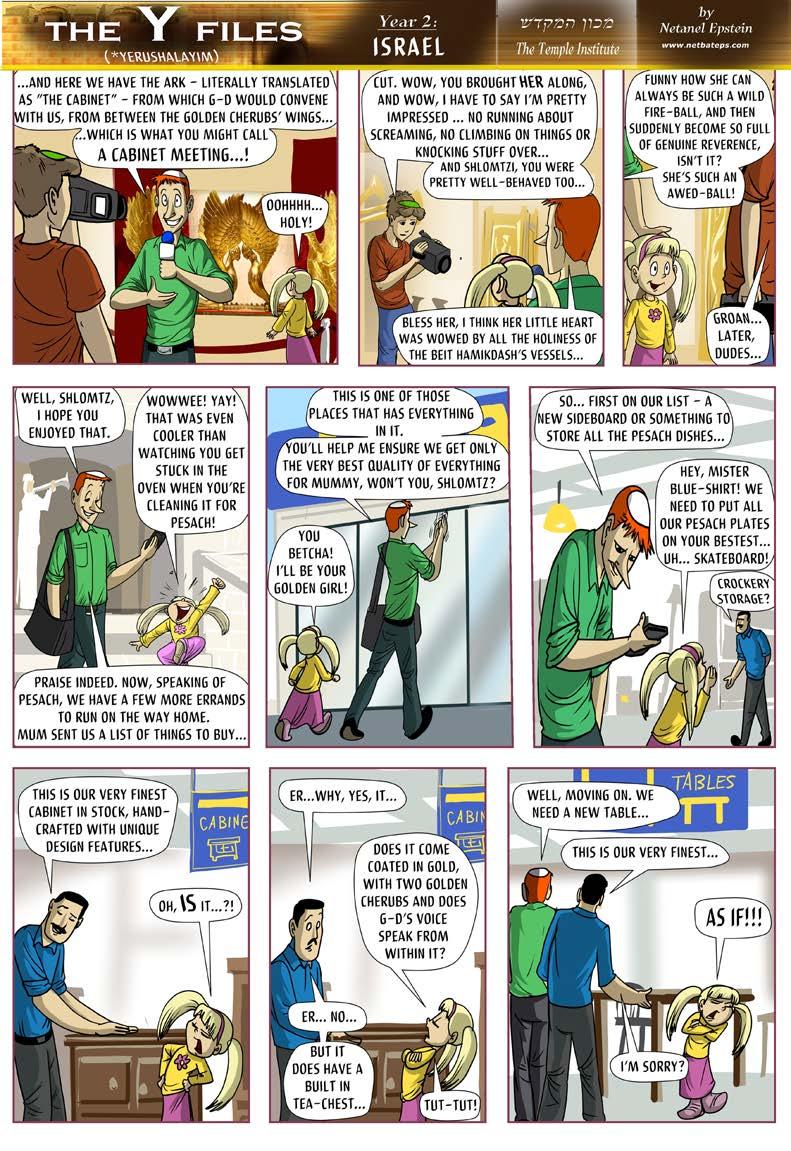
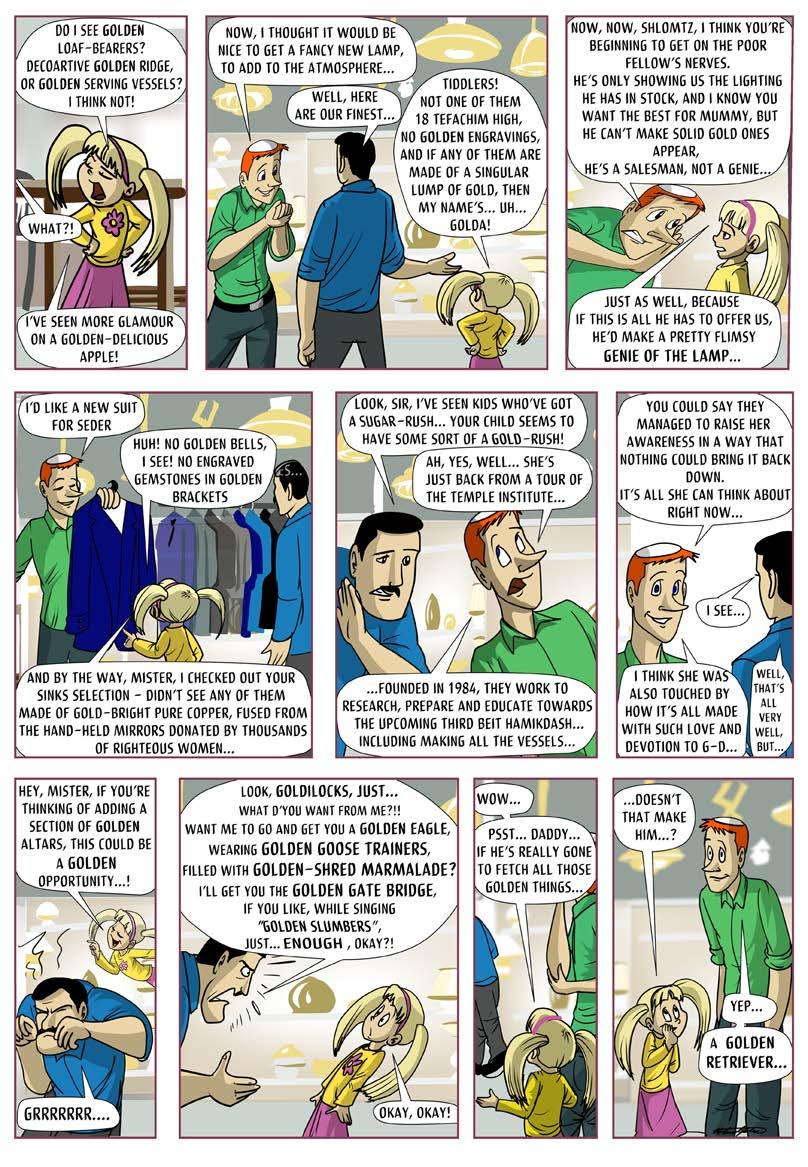
CARING PARENT, GRANDPARENT, EDUCATOR, THERAPIST, PERSON?
LOOKING FOR TOOLS FOR EMOTIONAL LOOKING FOR TOOLS FOR EMOTIONAL MANAGEMNET, FOR YOU OR A CHILD? MANAGEMNET, FOR YOU OR A CHILD?


I CAN HELP YOU ! I CAN HELP YOU !
Experienced therapist, 12 years in Art Therapy


& Theta healing
Teaching for years the FSTR method- Five Steps To Relief, I created

Using method: empowers, brings calm & balance Work with organizations & private people

I teach the FSTR method in : Course, Lecture, Workshop, Book & One on One. In person & on Zoom.
For information, contact



shiraisthe1@gmail.com
katzr.net/8d5729


ד"סב




In this week’s Parsha, the Jewish people completed the assembly of the Mishkan. During the 40-year period of wandering the desert, Klal Yisrael took apart the Mishkan for traveling and would reassemble it at each stop.
These are the details of the- “ה ידוקפ הלּא ןכשמ


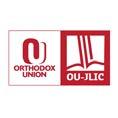
” states parsha the of beginning The Mishkan Mishkan..”. The passuk mentions the word Mishkan twice here. Why? According to Rav Maimon, the passuk is referring to the two different states of the Mishkan- assembled and disassembled. In both states, the Mishkan served a unique purpose for Klal Yisrael.
The Mishkan, while assembled, allowed the Jewish people to so clearly “see” Hashem through its nature defying miracles. In turn, this enabled the Jewish people to experience Hashem and more easily develop a close connection with Him. In contrast, when the Mishkan was taken apart for travel, the Jewish people didn’t have the opportunity to see these daily miracles, which made it much harder to have a connection. However, the
harder we need to work to create a connection, the deeper and more meaningful that connection can and will be.
Reb Noson in Lekutai Halachot says that Moshe Rabbenu and Hashem knew that there would come a time when we would have the Beit Hamikdash and that it would be a very special time – a time of relatively easy connection. The fully assembled Mishkan served as a model for this time, when we so clearly saw Hashem and his undeniable presence in our world. In addition, Reb Noson discusses a time like the exile we are currently in, where Hashem’s light is harder to find and only discoverable through working hard to cling to him and reveal his light. Although, during this time of hastara (hiddenness), despite having to work harder to connect to Hashem and find him, the relationship and bond we create will be unparalleled to any other. Hashem, while testing us in this time of exile to find and cling to him, is also rewarding us with the opportunity to become close to him as a result of our toil. This is why the passuk uses the word “Mishkan” twice- to show us that we must connect to Hashem not only when
it is easy, but even more so when it is hard. Just as the Jewish people wandered the desert for 40 years with the Mishkan, we too, lost in this exile, are wandering with our own individual Mishkans within us. The Mishkan is a symbol of connection for every jew. At times, we will feel settled in life, things will be going well and our Mishkan will be assembled. At other points in life, we may struggle, and feel in the dark. It’s exactly at these times we must connect to our disassembled Mishkan and work extra hard to find Hashem. May we find the strength to take advantage of this great opportunity, to connect deeply, and to feel Hashem in our everyday lives.











The OU’s Jewish Learning Initiative on Campus (JLIC) is creating and nurturing vibrant religious communities in Israel to support English-speaking college students and young professionals. JLIC Israel’s goals include: building a warm and welcoming Jewish community for students and young professionals; providing engaging and dynamic Jewish education; providing a supportive home environment for Olim; providing resources for personal and religious growth, including personal mentoring, Aliyah support, religious guidance and leadership development. Current JLIC programs in Israel include: Reichman University - Herzliya; Bar Ilan University - Givat Shmuel; Tel Aviv University; Tel Aviv for Young Professionals; and Jerusalem. Contact: Rabbi Jonathan Shulman, Director of OU-JLIC in Israel shulmanj@ou.org


 TEENS NCSY ISRAEL
TEENS NCSY ISRAEL


There are different types of chessed. When someone donates money, time, or other kinds of help, it is definitely a mitzvah, but when they do this only with the intention of helping someone in need, it’s a stronger kind of chessed. We can see this in this week’s parsha, when Moshe Rabeinu asked Bnei Yisrael to donate items for the building of the mishkan, but only on the condition that they give for Hashem’s sake. They gave so much that Moshe had to tell them to stop.
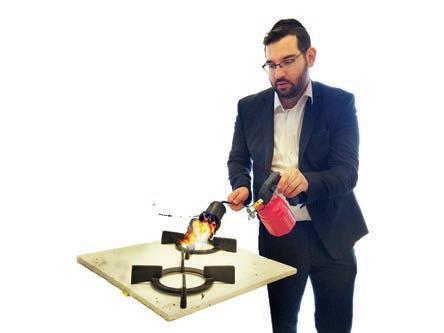
We don’t have the mishkan today, but we can still do acts of kindness for others only for the sake of the mitzvah, like םילוח רוקיב or הלכו ןתח חמשל. For example, when you visit a sick patient in the hospital, you can tell them happy stories to help them remember the good times in their lives. When you go to a wedding and dance with the bride, you’re participating in their simcha and increasing their happiness. When you do either of these mitzvot, you are doing them
without expecting anything in return - no strings attached - just for the mitzvah and to bring G-d closer to us. Shabbat Shalom


In להקיו תשרפ Moshe gathers all of לארשי ינב and tells them all the things that Hashem has commanded them to do. This included the commandment to contribute materials for the ןכשמ and the construction of the ןכשמ.
, the Jews didn’t learn finer skills. There were no Jewish artists as they weren’t trained and couldn’t spend time developing their talent. The Rambam says that there were Jews who even though they were unskilled, had the natural ability and were inspired and uplifted to volunteer for
whatever needed to be done. In addition, they believed that Hashem would help them perform His will properly.
The Or HaChaim says there were 2 types of givers. There were those whose spirit motivated them voluntarily and wholeheartedly to give what they could afford. But, there was another group of even greater people whose hearts inspired them to do more than they could afford because of their desire to share in the construction of the ןכשמ was so great.
In the heart of calm and pastoral BAKAPrivate arab house, 6 rooms, 500m + possibility of building 250m, huge garden, approx. 700m, completely renovated, underfloor heating + a/c, large parking, 5 bathrooms, 5 toilets, green
MENDEL 0528980111
From this we learn an important lesson. It is always important to give, and to give what you can afford. However, we should try and get to a point that we aren’t just motivated to give. We should try and become like the group of great people. To get to a point where our hearts are inspiring us to give as much as we can.
In a deeply powerful scene, Moshe Rabbeinu is found with his hands held high on top of the mountain praying for the people gripped in a raging battle with Amalek below. Ahron and Chur stood on either side of Moshe Rabbeinu holding his hands aloft (Shemot 17;10). Rashi teaches that Chur was the son of Moshe’s sister, Miriam. What more do we know about Chur? What is the symbolism of his joining with Ahron to support the hands of Moshe Rabbeinu?
view to Gan Sacher valid/current building permit4 floors, total 200+ sqm & balconies
BAKA - New penthouse, 4 rooms in a small luxurious building with character, alone upstairs, 3rd floor + elevator, 4 orientations, 3 toilets, 2 bathrooms, terrace / sukkah, 70m, parking, store-room
5450000 NIS MENDEL 052-8980111
VERY GOOD INVESTMENT!!
KATAMON HAYESHENA / Near EMEK
REFAIM -
3 rooms, 75m + independent unit, 30m, private entrance, garden in use, calm, parking
NIS 6.95M
Shimon 058-455-0010

Rabbi Roberts in Through the Prism of Torah explains that Ahron and Chur personified contrasting character traits. Ahron was a peacemaker, he constantly looked for ways to create harmony among his people. Indeed, he was ready to compromise his own values to achieve this goal, as we see in the story of the sin of the golden calf. Chur,
no agents
on the other hand, was a person who stood strong in his values, unbending and resolute in his beliefs. Chazal teach that Chur tried to challenge the people when they wanted to build the calf and they subsequently killed him. Chur, a descendent of Yehudah, was a person who was inflexible and strong like a lion. Truly, a combination of both qualities is necessary. In interpersonal relationships it is wise to follow Ahron’s path, to compromise and make peace whenever possible. However, in the service of Hashem and reinforcing kevod shamayim, one needs to follow Chur’s example and be resolute in his values. These two special people joined Moshe Rabbeinu to activate the merits of these approaches as he implored Hashem to have mercy on His people and vanquish Amalek, physically and spiritually.
In the heart of BAKA in a calm and pastoral street - spacious 5 rooms, elevator, terrace, store-room, parking, near all amenities
5300000 NIS MICHAEL 052-3202488
ARNONA – 3 rooms that will be transformed into 4 rooms of 90m, 3rd floor with elevator, store-room, parking
For Sale - Gorgeous apartment in Old Katamon
ONLY 2550000 NIS
MICHAEL 052-3202488

In a unique Old Arab style building - Spacious 110sqm, 4 room apartment with Sukah balcony, Shabbat elevator, parking & large separate storage room. lots of character, excellent condition, central A/C Truly one of a kind! 5,280,000nis
BAKA - quiet and pleasant little street5 rooms, 175m, on one level, alone upstairs, private entrance, elevator in the apartment, high ceilings
For Sale – Old Katamon, Negba st., 1st floor, Arab house, 4 rooms, (total about 160m), high standard of renovation, Sukkah porch, 2 full bathrooms + guest bathroom, central a/c, elevator, parking, small machsan, asking $2,550,000
MIKAEL 052-3202488

TALPIOT HAYESHENA / little street – In a new quality project, 5 rooms, 140m, elevator, large garden, occupancy in 2 years
6000000 NIS MICHAEL 052- 3202488
A rare opportunity to purchase a luxury double Sea Facing Apartment in Netanya




6 Rooms Facing South/West
2 Balconies
18th Floor Concierge 24/7
Heated Pool open 7 months of the year Fully Equipped Gym
2 Underground parking spaces
2 Spacious storage Rooms
2 minutes walk from Young Israel Synagogue
2 minutes walk from the beach
On Prestigious Nitza Boulevard, North Netanya




10 Minutes walk from the centre of Netanya
Contact:
Alexandra Stuart
053 822 3513
+972 53 822 3513
By Phone or whatsapp
Price NIS 7.7 Million











When one sees blossoming fruit trees for the first time during the month of Nisan, one should say this blessing:





This blessing is said just once a year—the first time that one sees it.






LESS THAN THREEE WEEKS LEFT BEFORE PRICES GO UP THE WORLD PREMIERE OF ABARBANEL –
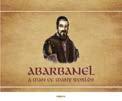
Register and pay for THIS MAGNIFICENT FILM before is sold ou
SUNDAY EVENING, APRIL 16, 8:00 PM
in the Pelech Girls school – 31 Yehuda St., Baka but ONLY by prior registration and payment
Cost: 100 NIS per person
Ifyou registerbeforePesach,(April5)you’ll receivea Destinygiftworth100NIS!
Limited seating. (Price of the film ticket increases after Pesach [April 5] to 180 NIS per ticket!)
If you cannot be in Jerusalem the night of the Premiere, you can still see the film in your home on Sunday evening April 23 a t 8 PM ON ZOOM ( exactly a week lat er ) 100 NIS on Zoom pe r family
BECOME A DESTINY SPONSOR OF THE PREMIER AND SUPPORT RABBI WEIN & DESTINY

best seats, light dinner and meet with Rabbi Wein before the film 500 NIS per couple
For questions, sign up forms, information, payment, email Shira at abarbanelmovie@gmail.com or WhatsApp 0547-54-36-18
in the magnificent, mostKosher
FEATURING RABBI BEREL WEIN AS SCHOLAR IN RESIDENCE (& additional Rabbis)
Five days and Four Nights, Wednesday, May 24 through Sunday, May 28 (Shavuot begins Thursday night)
PRIVATE DINING ROOM, BUFFET & FOR DESTINY GUESTS
Seven Lectures & Shiurim by Rabbi Wein Full board throughout, outstanding cuisine of highest Kashrut Standard (Rav Rubin) All night English Shavuot Program with Rabbi Wein & the other Rabbis, with refreshments Total Torah atmosphere in the hotel, Lavi’s well-known unique hospitality Indoor heated pool, Dry sauna for sitting and lying down, Fitness room, aerobic and strength machines (all with separate and family hours) Children’s Pool, children’s playroom, program for children (if sufficient registration) Horseback riding on premises, Get to see milking of cows daily and on Shabbat Optional Thursday bus tour to unique sites in the area (extra fee) Every room with five-star amenities including coffer maker, refrigerator, safe, etc. Full program on Chol, and also on Shabbat and Chag, (before & after) Jewish and Hollywood films Optional private bus from and to Jerusalem for the group (extra fee) (HashgachaMehadrinRabbanutGalilTachton,RabbiRubinMeat)
EARLY-BIRD DISCOUNT for those paying in full before (1st day of) Pesach FREE TIYUL orFREE BUSto&from hotel (580NISequivalent))
For registration forms, prices and all questions, call Nachum Amsel at 0522-52-00-31 or write to nachum@jewishdestiny.com